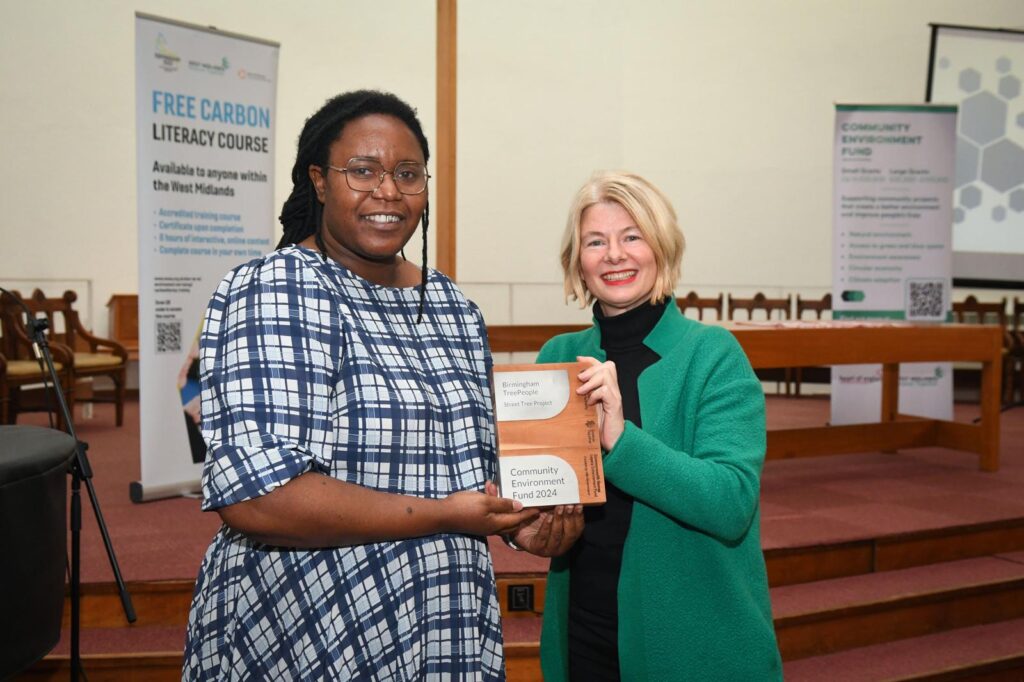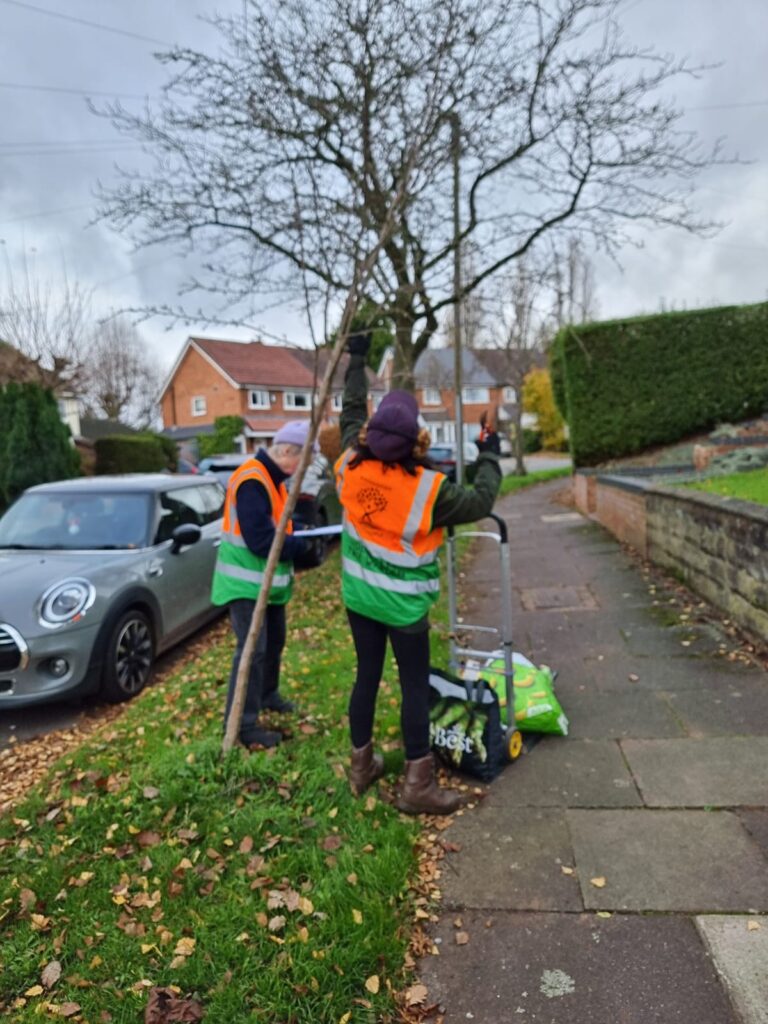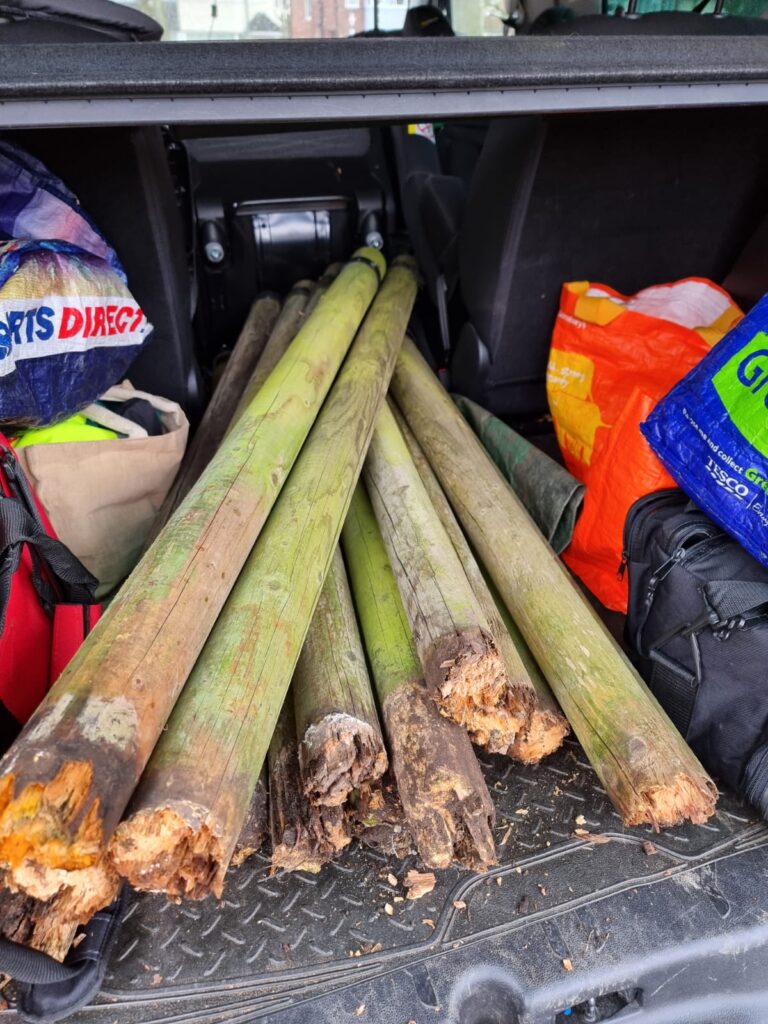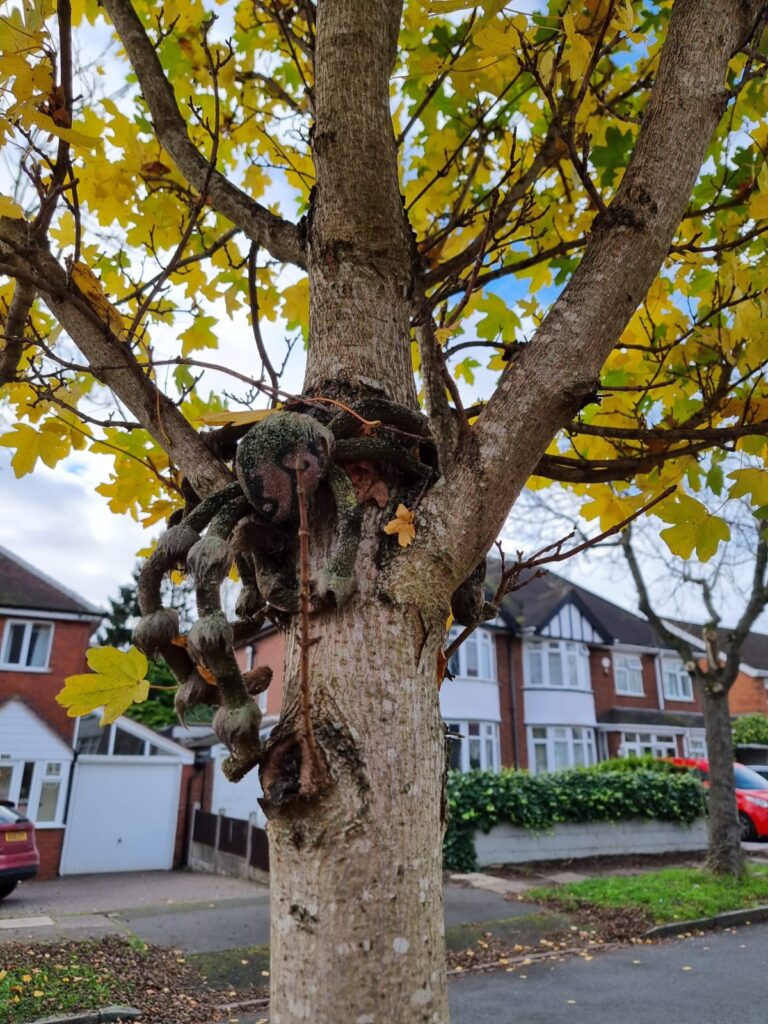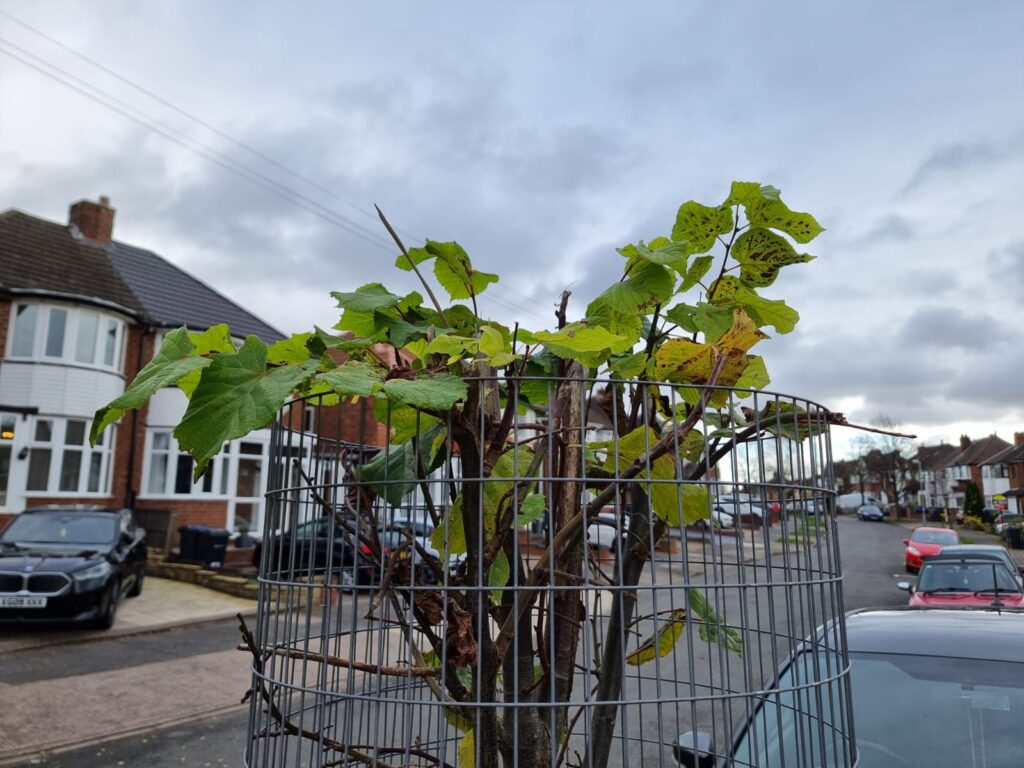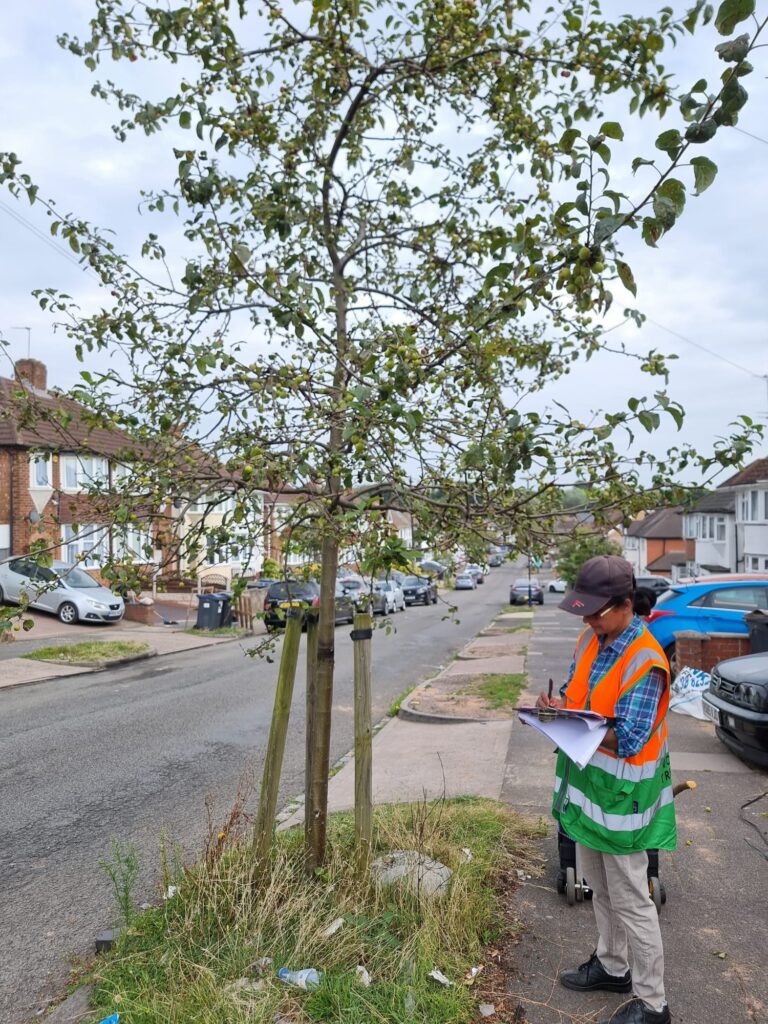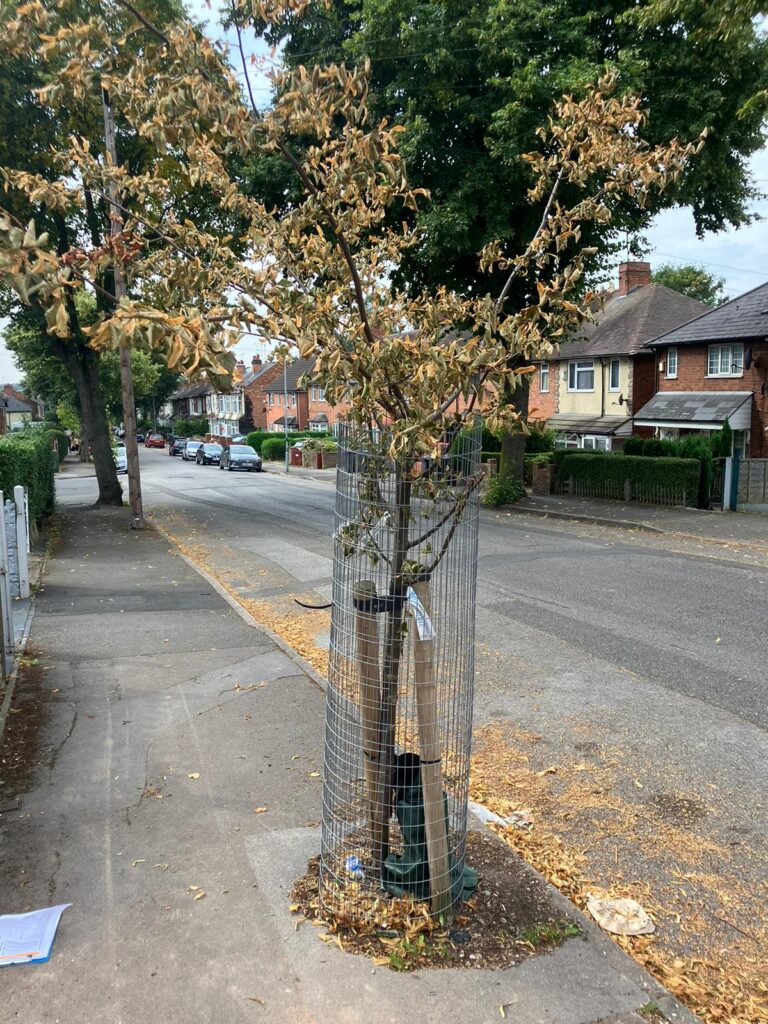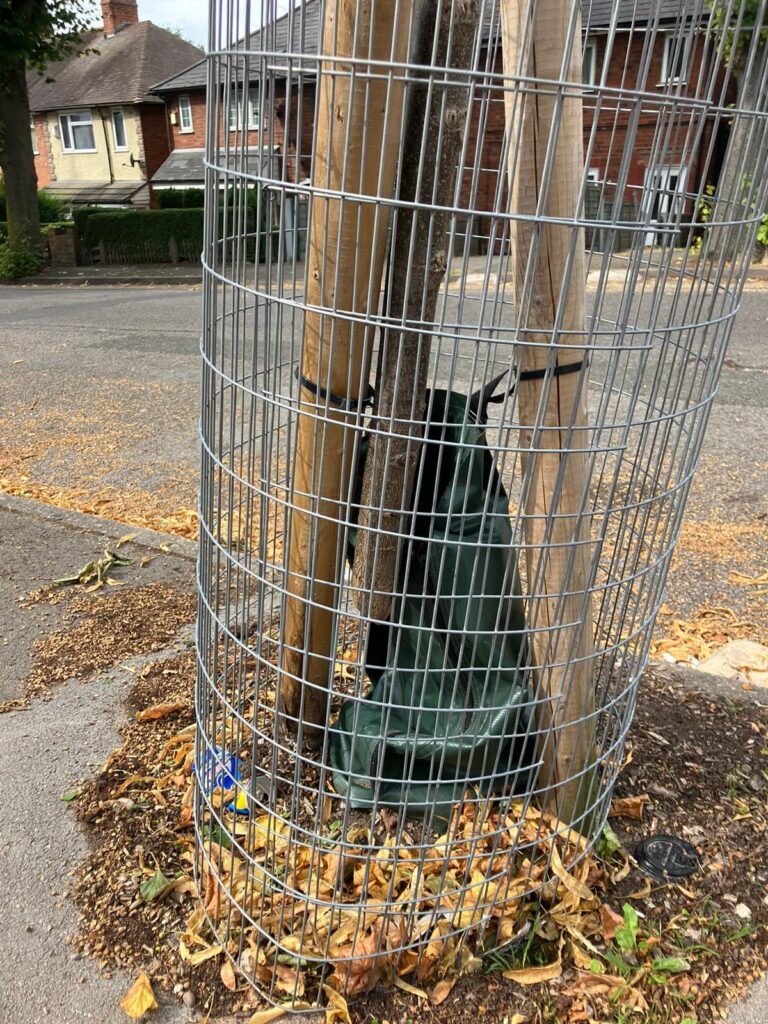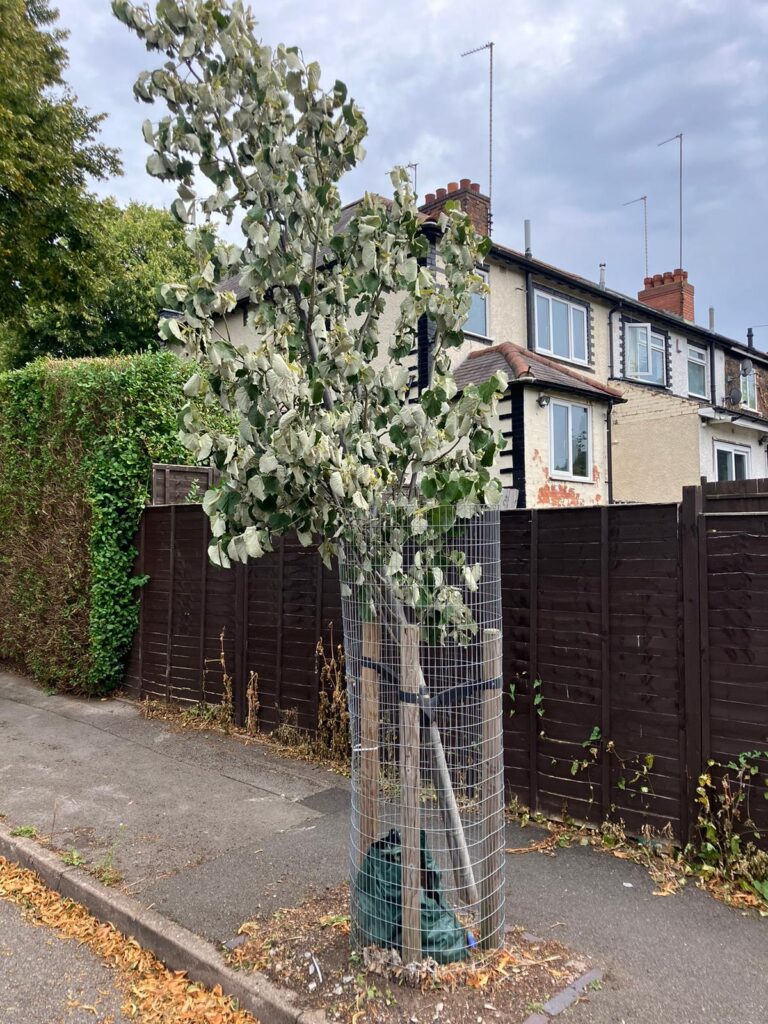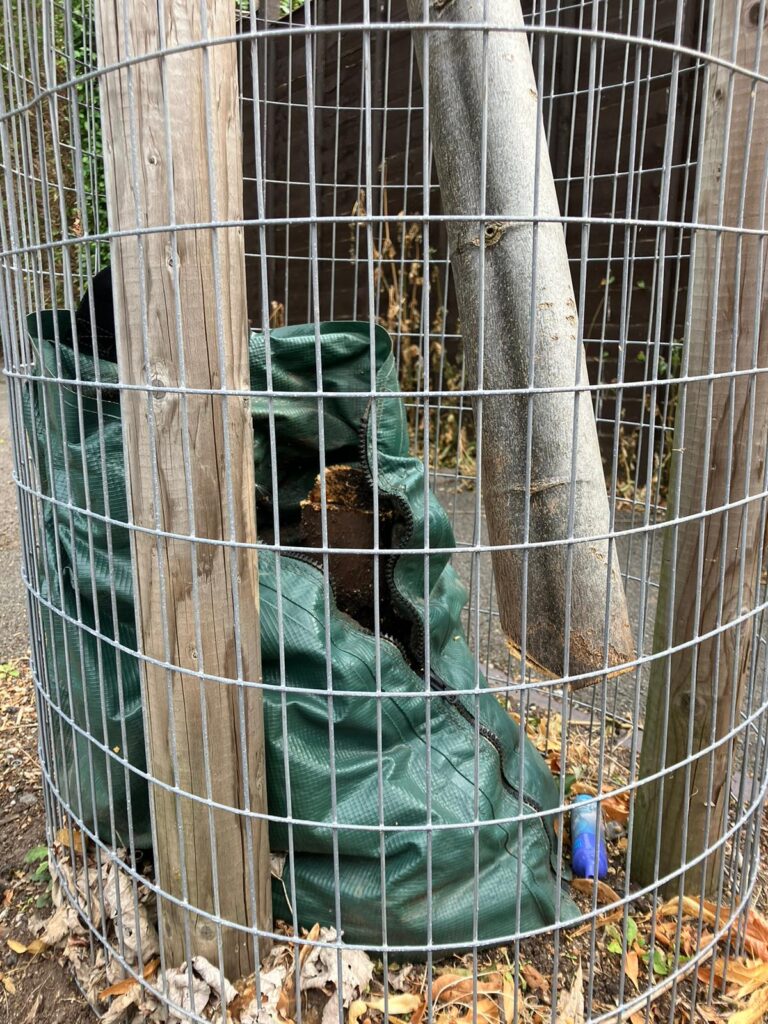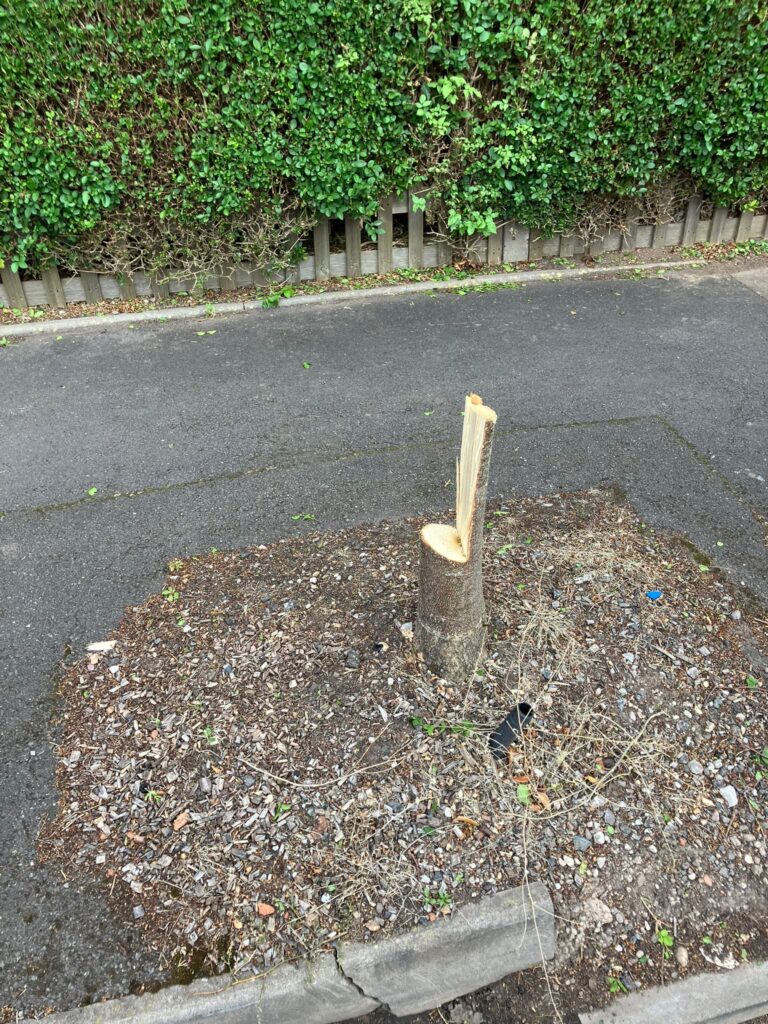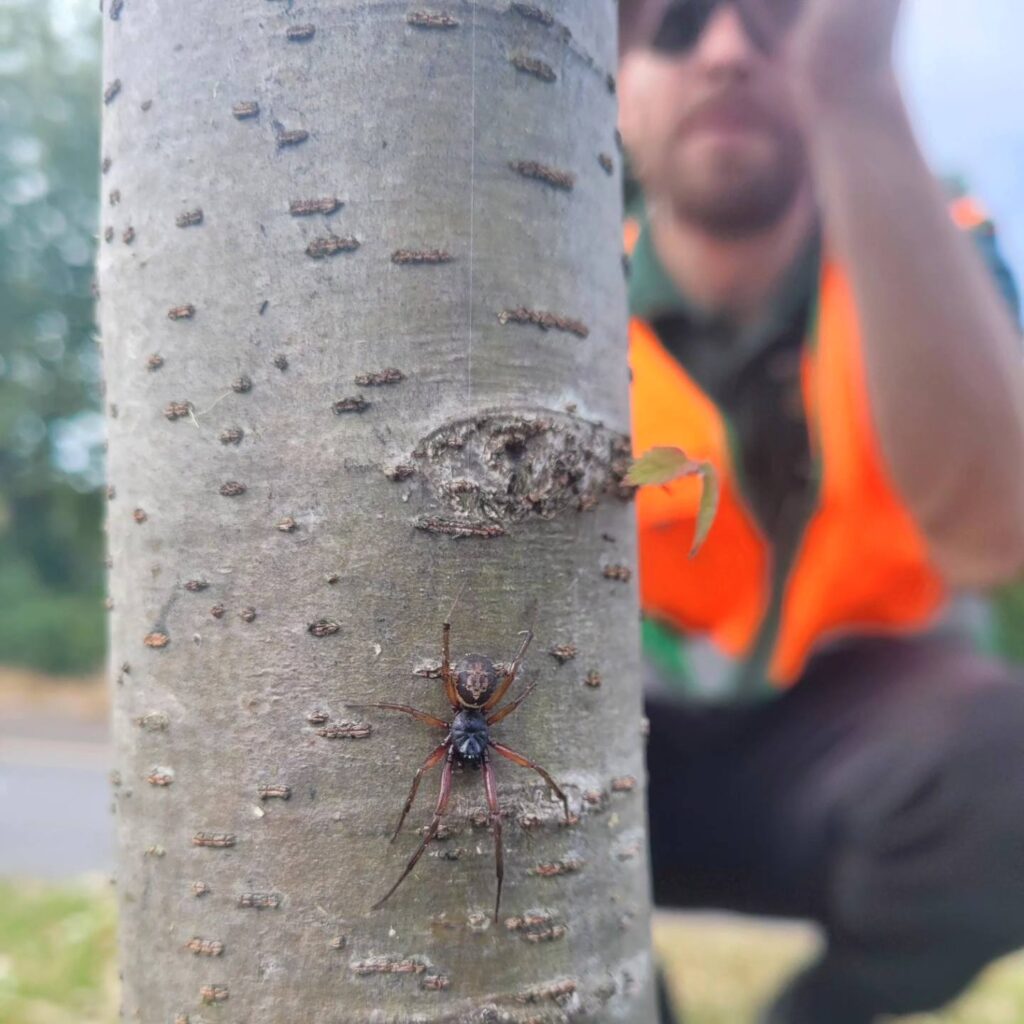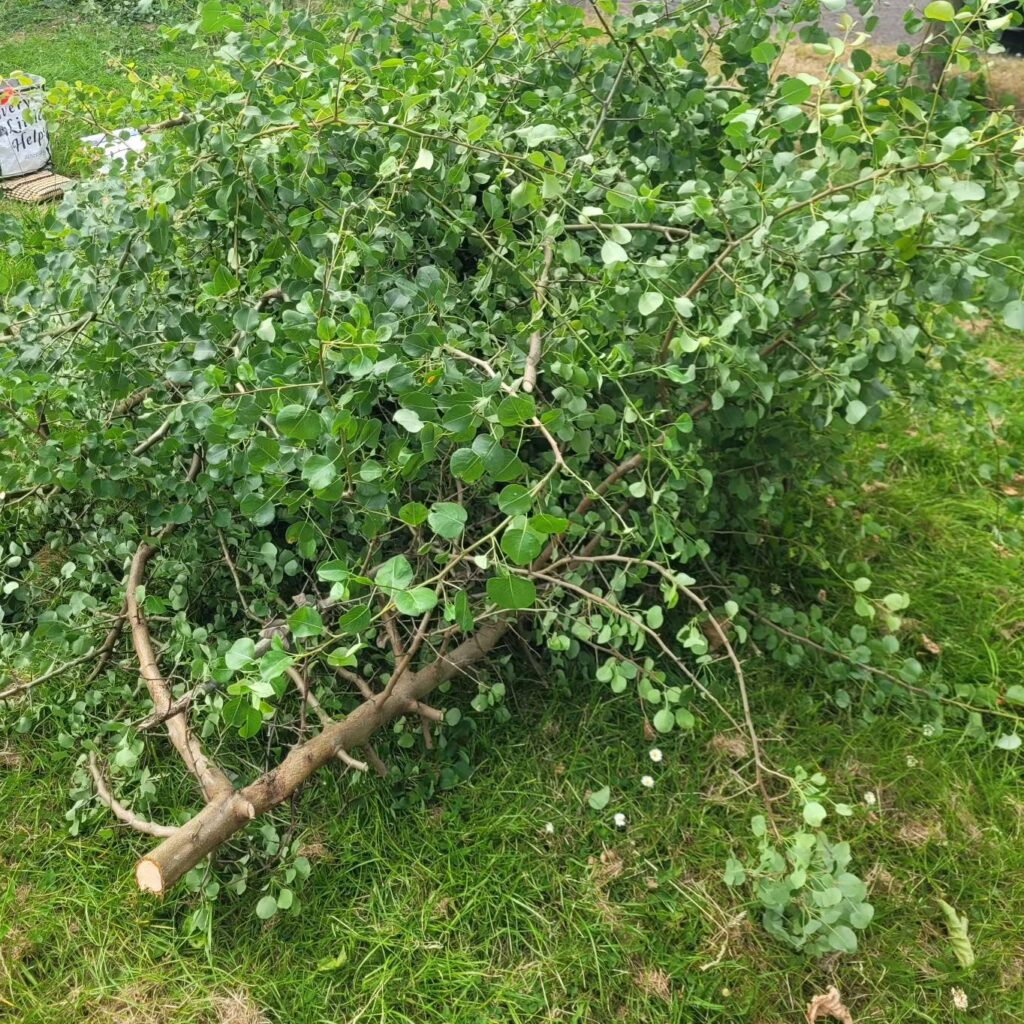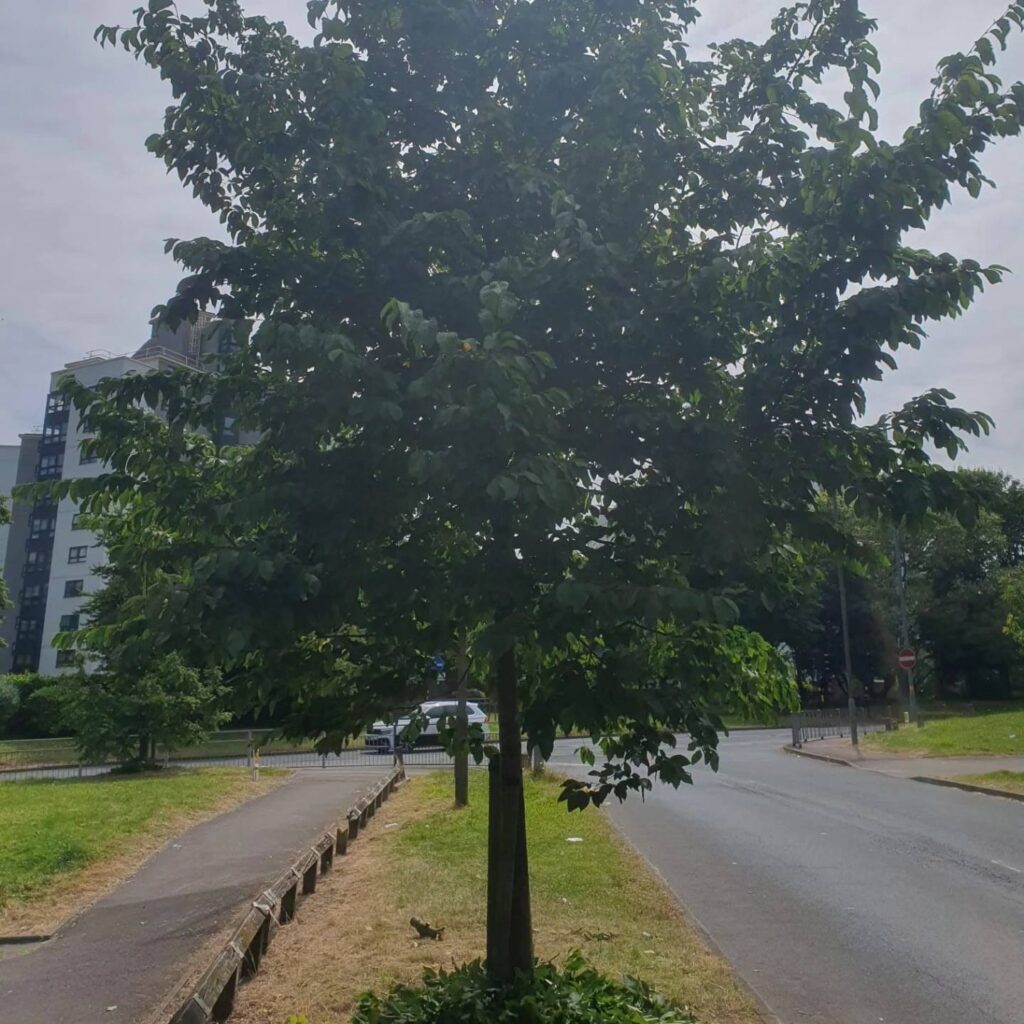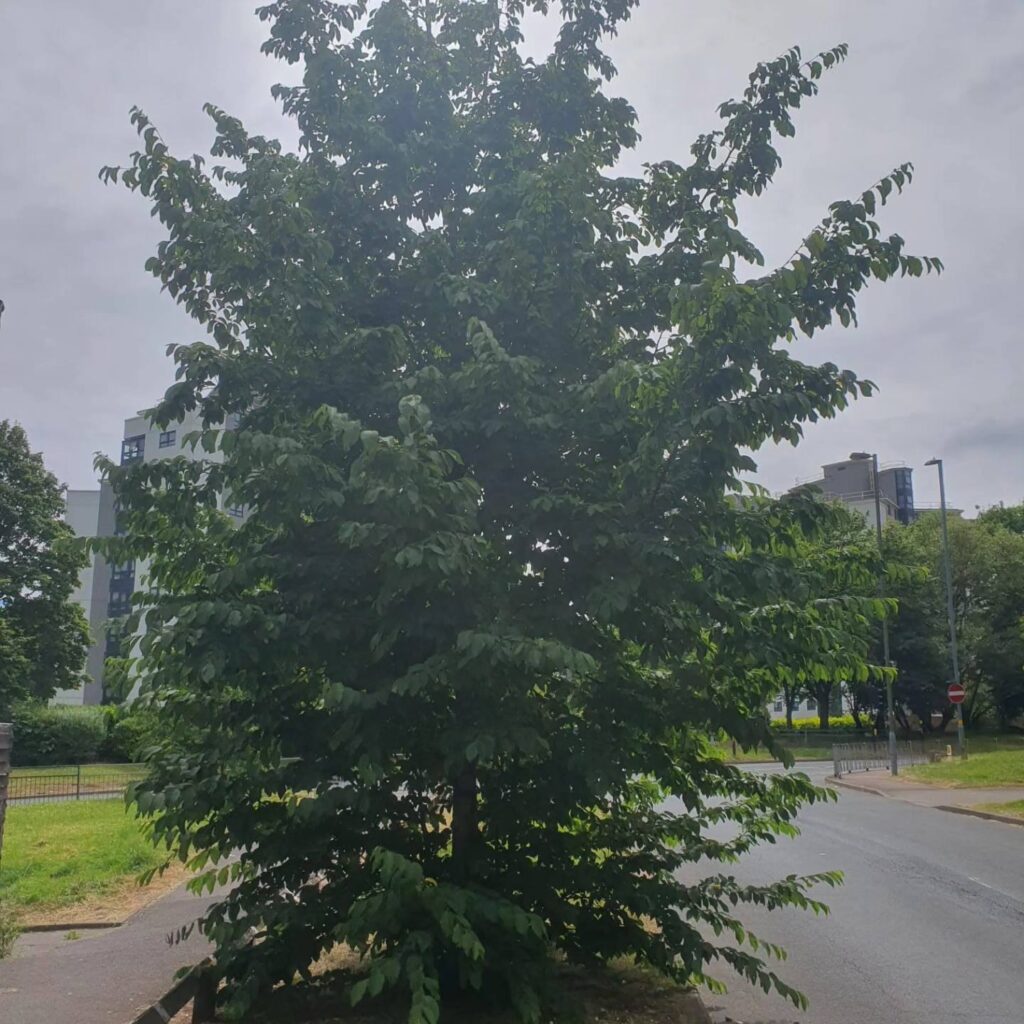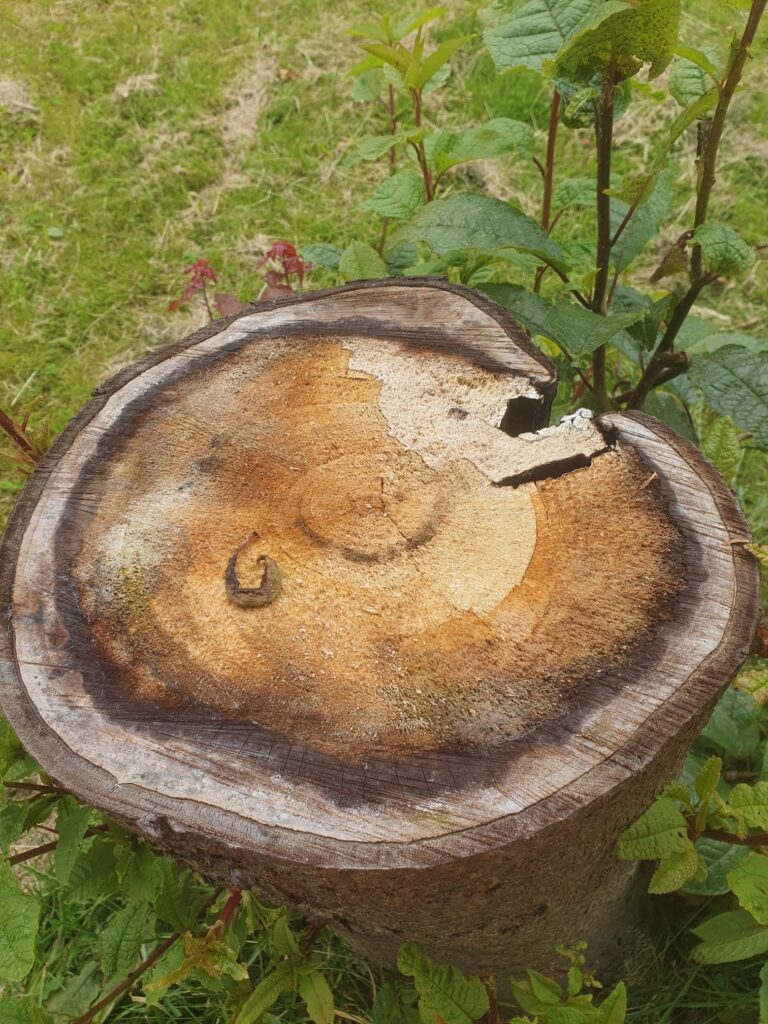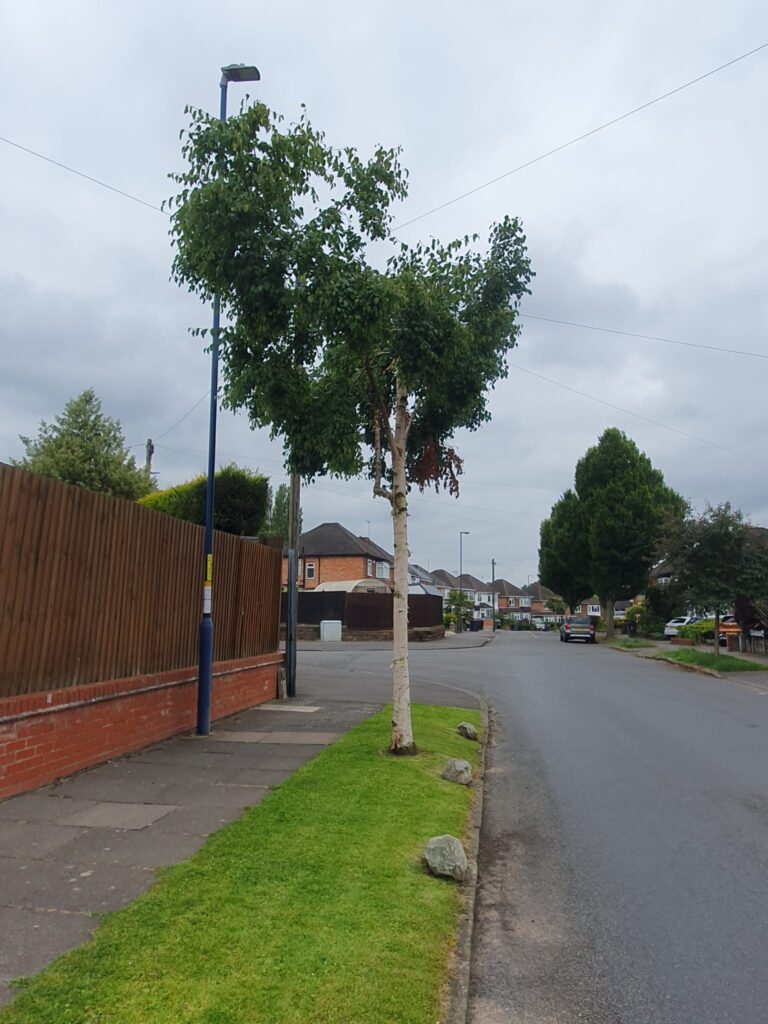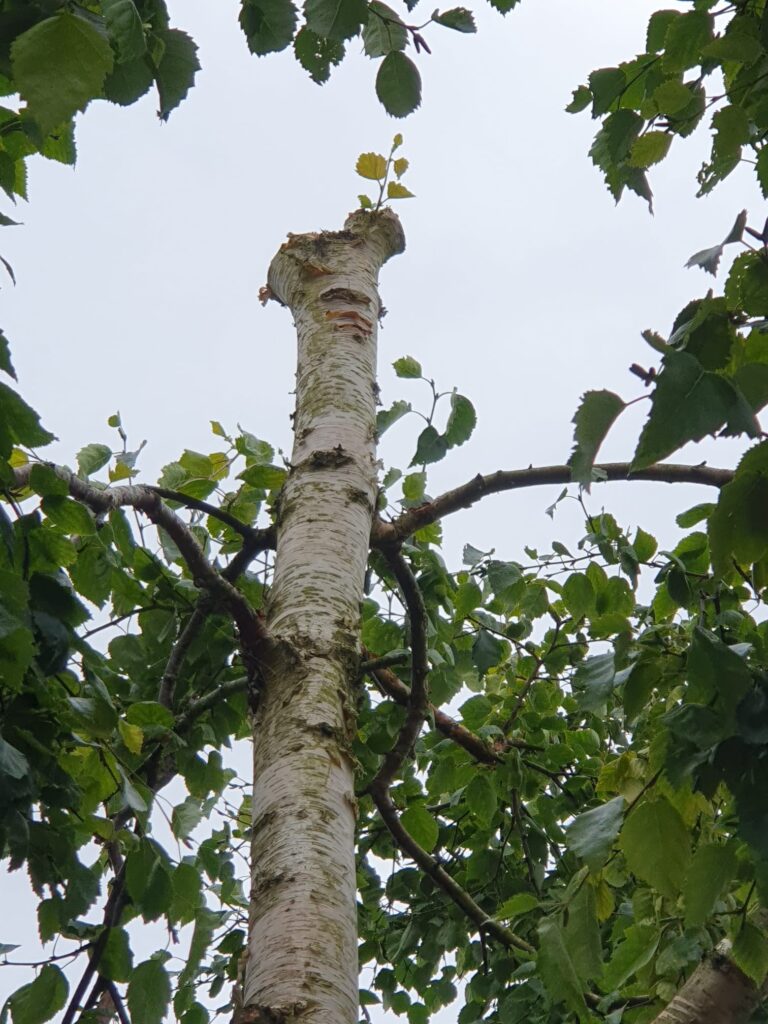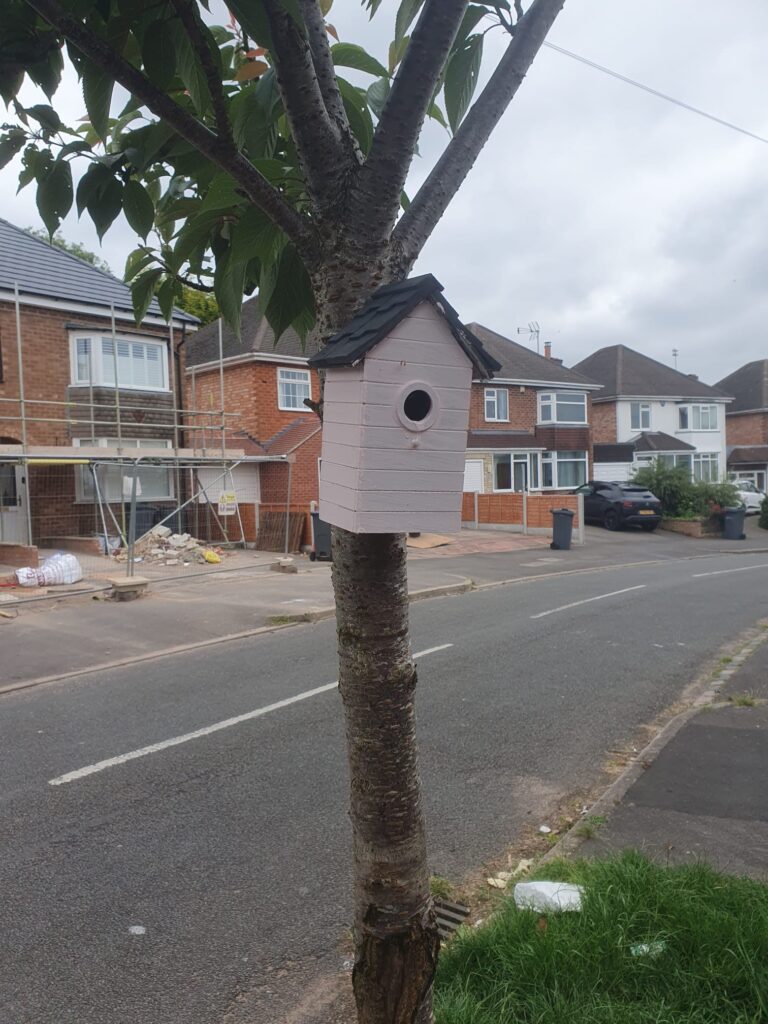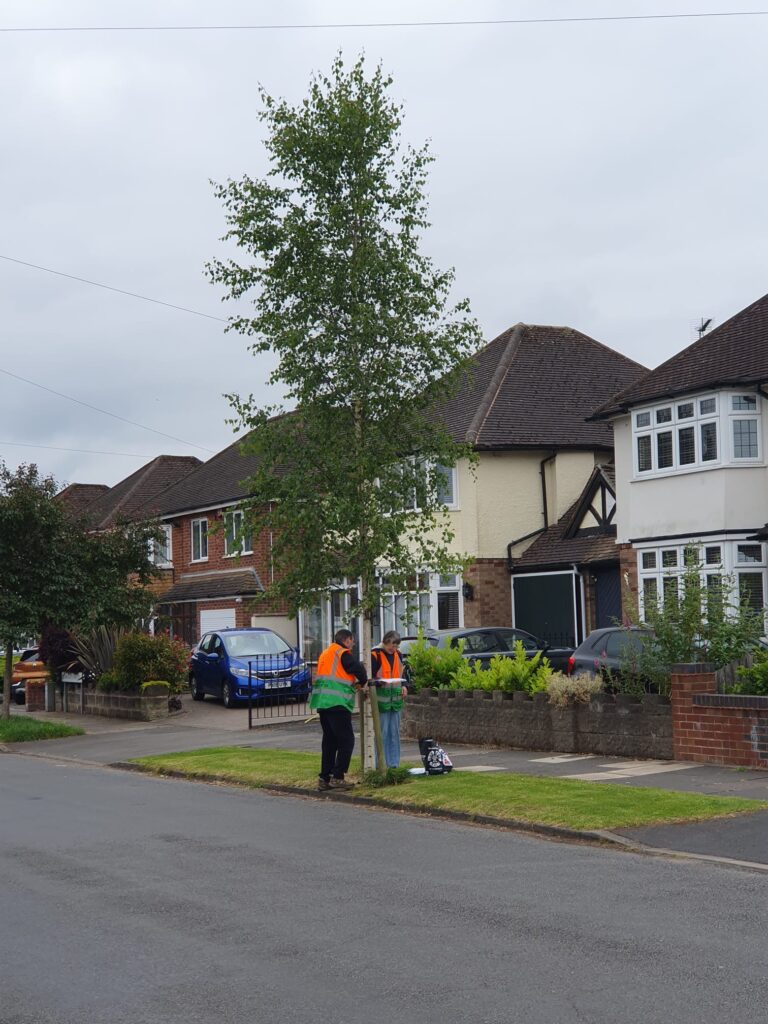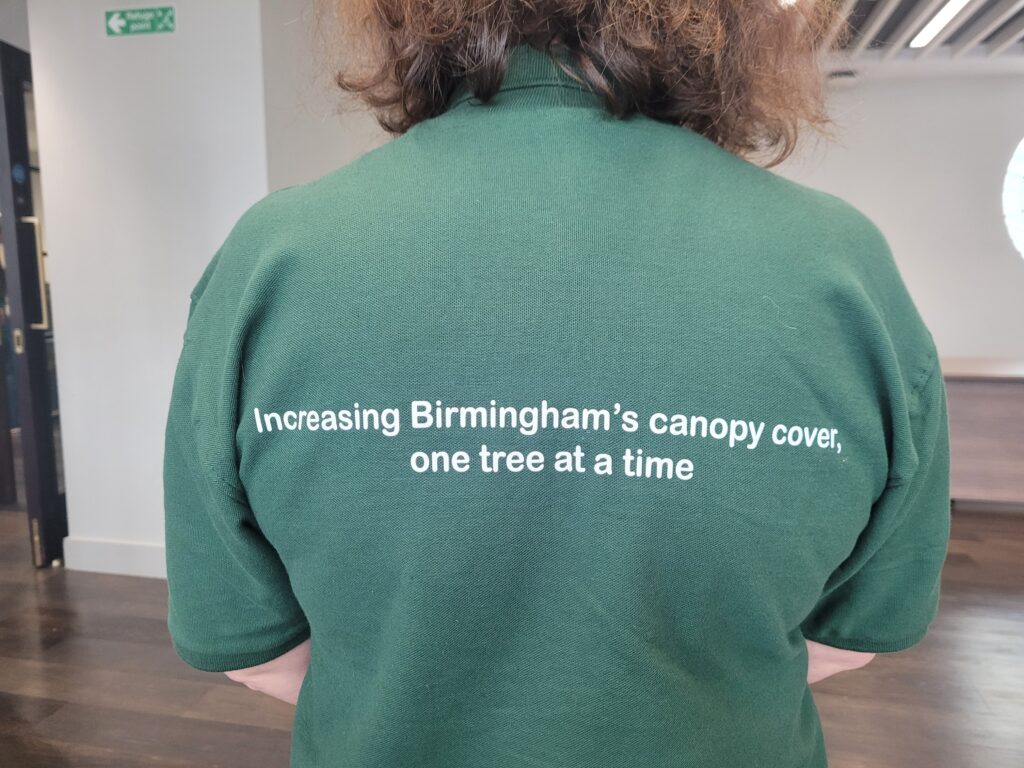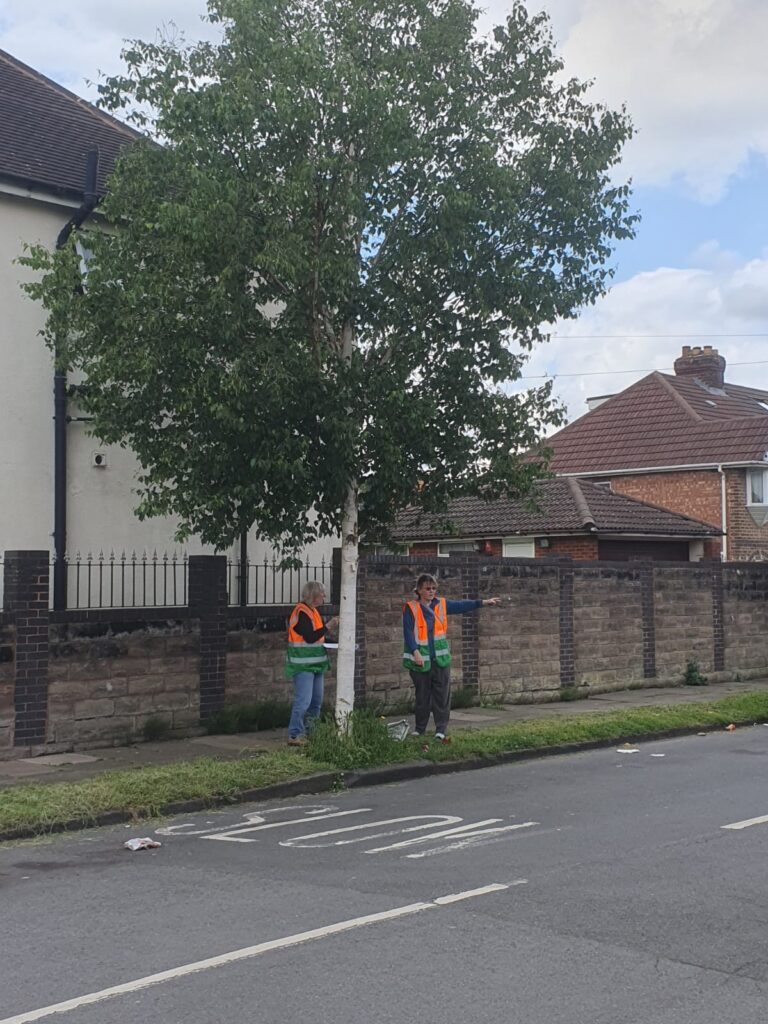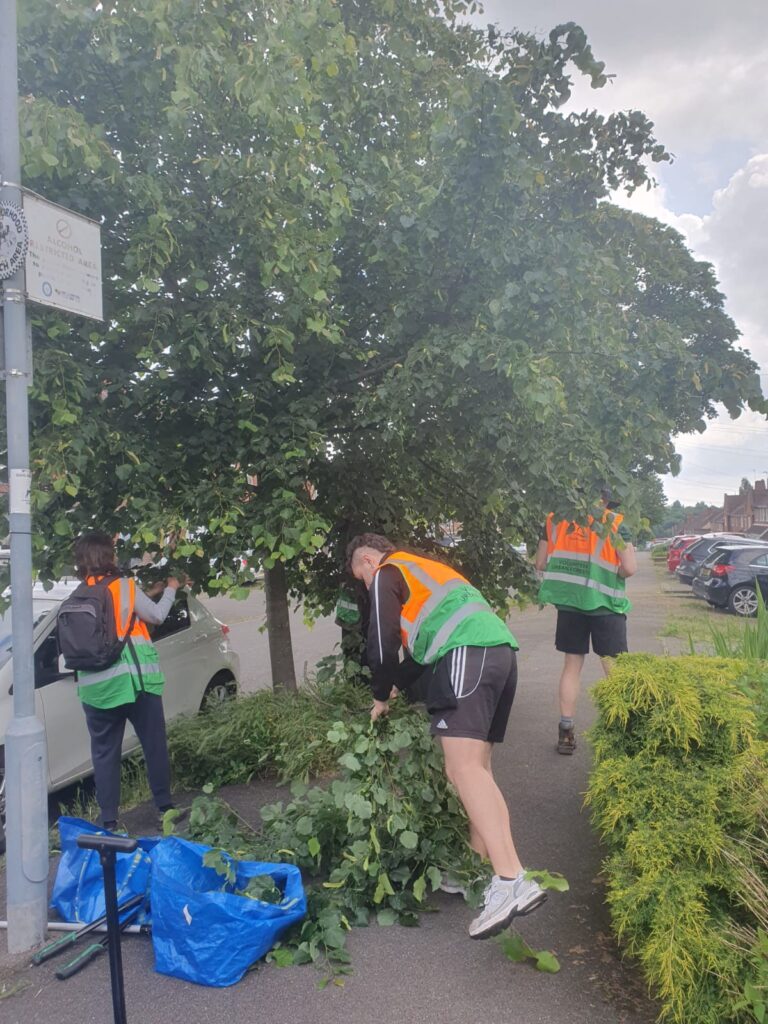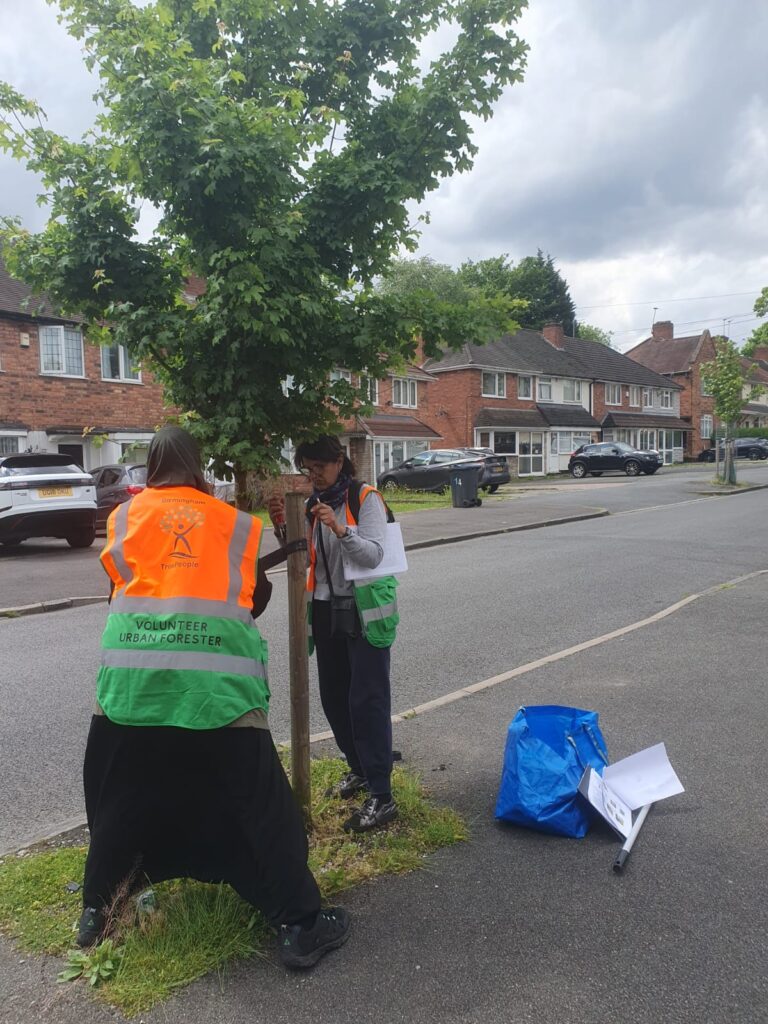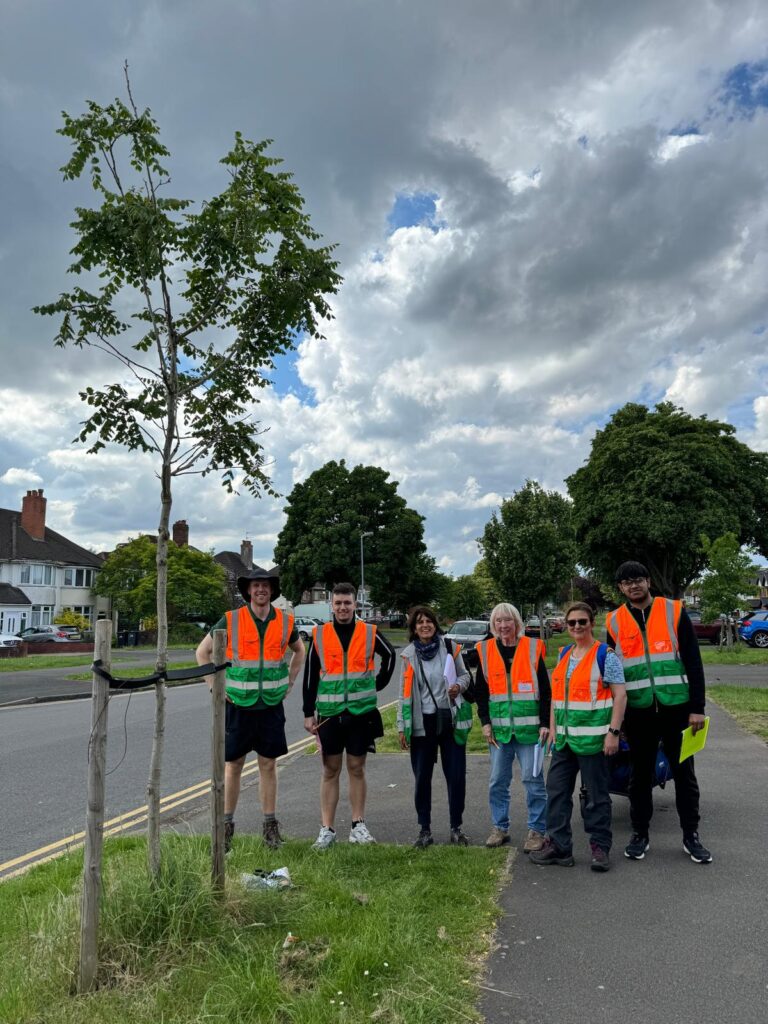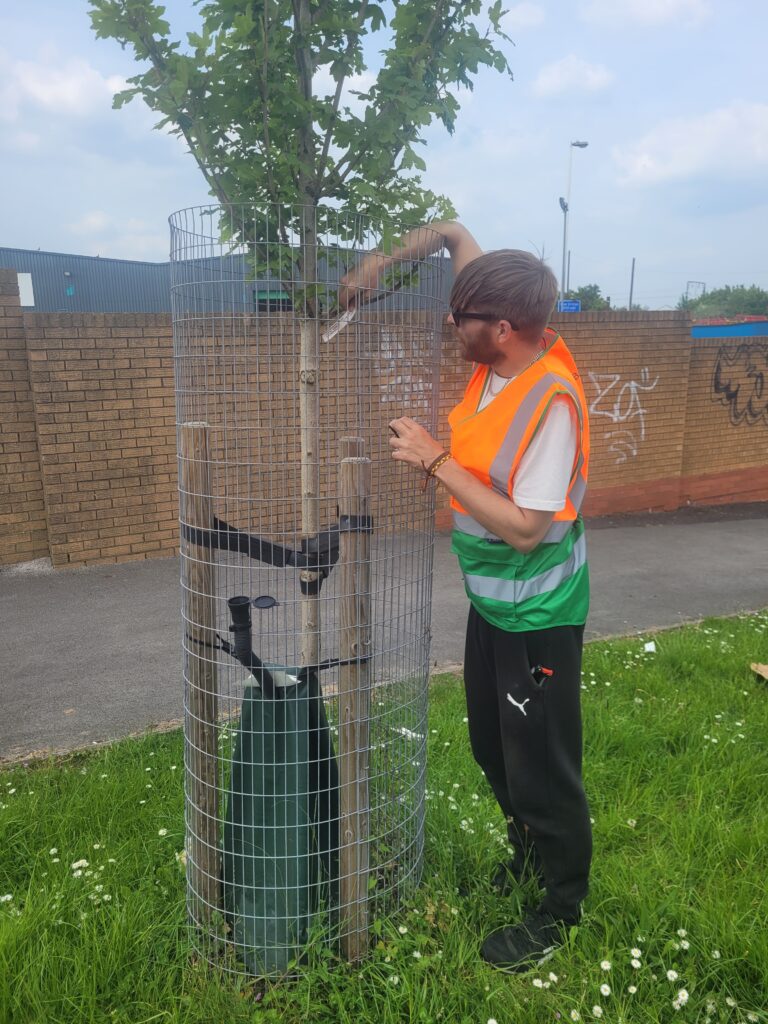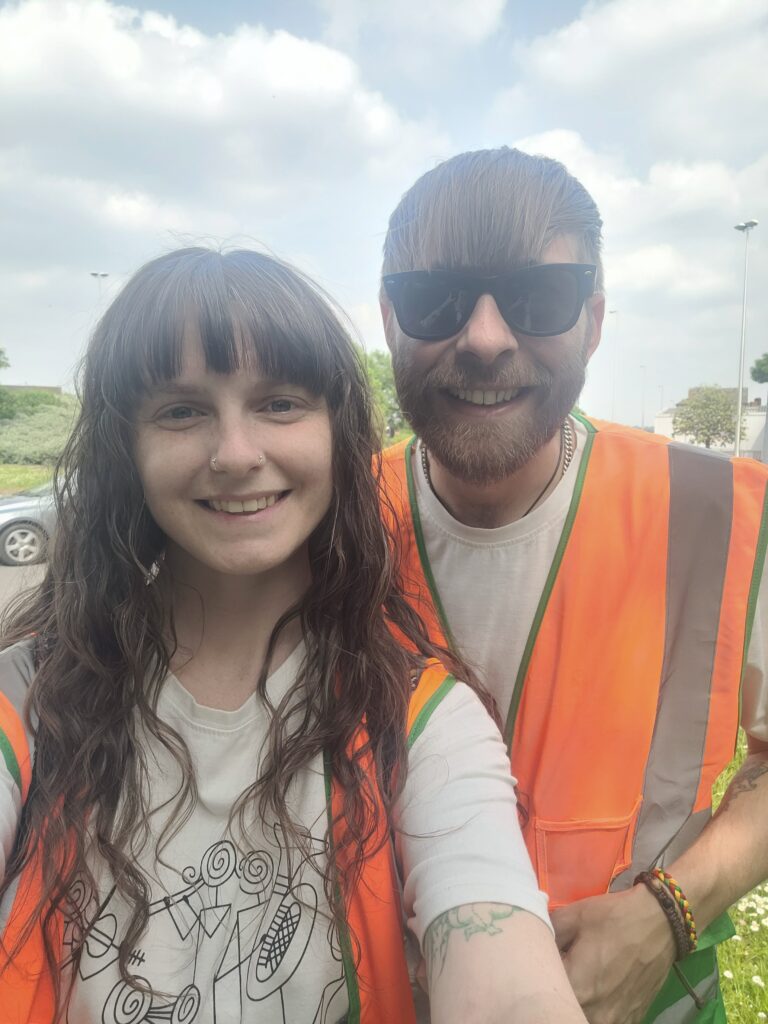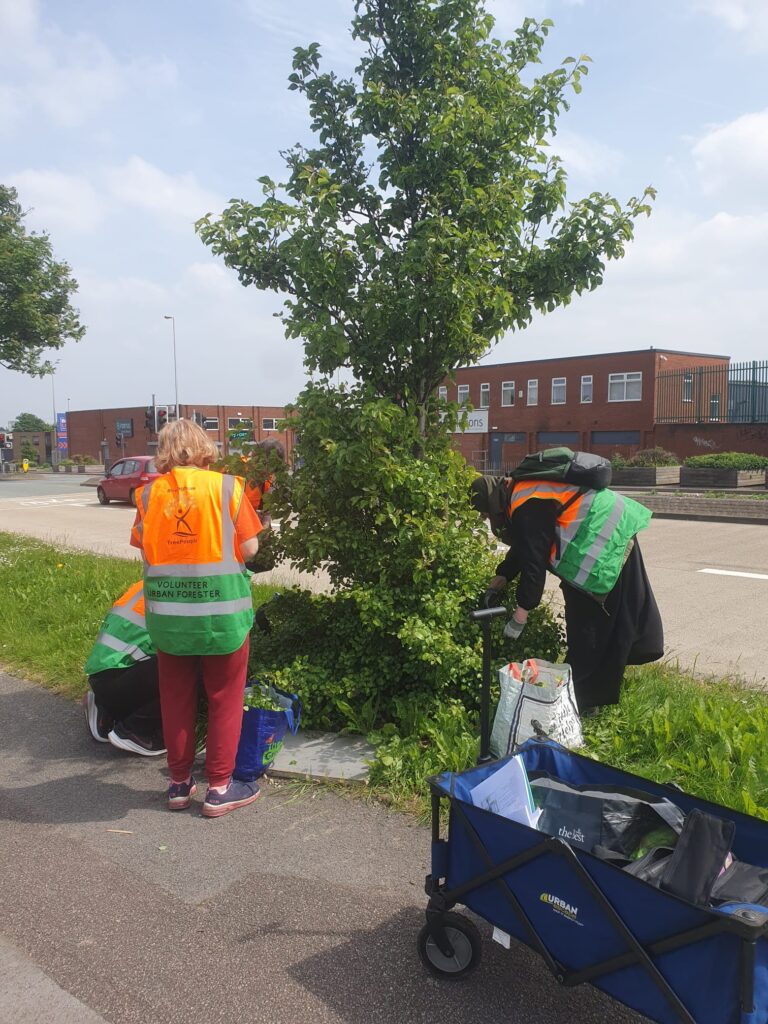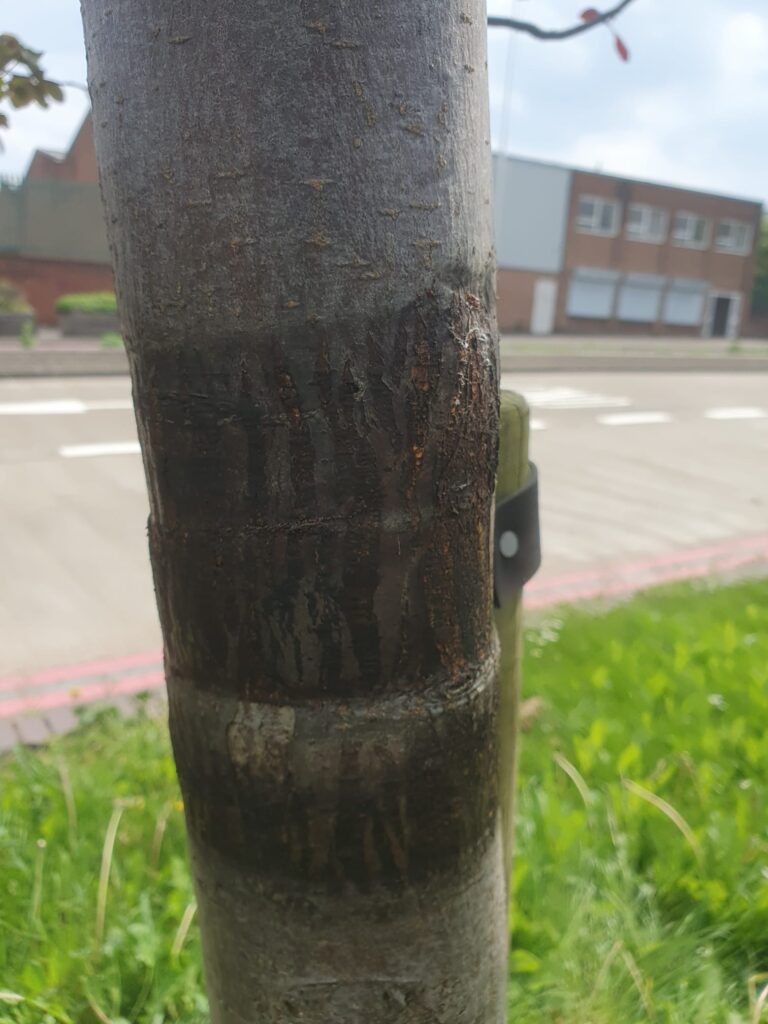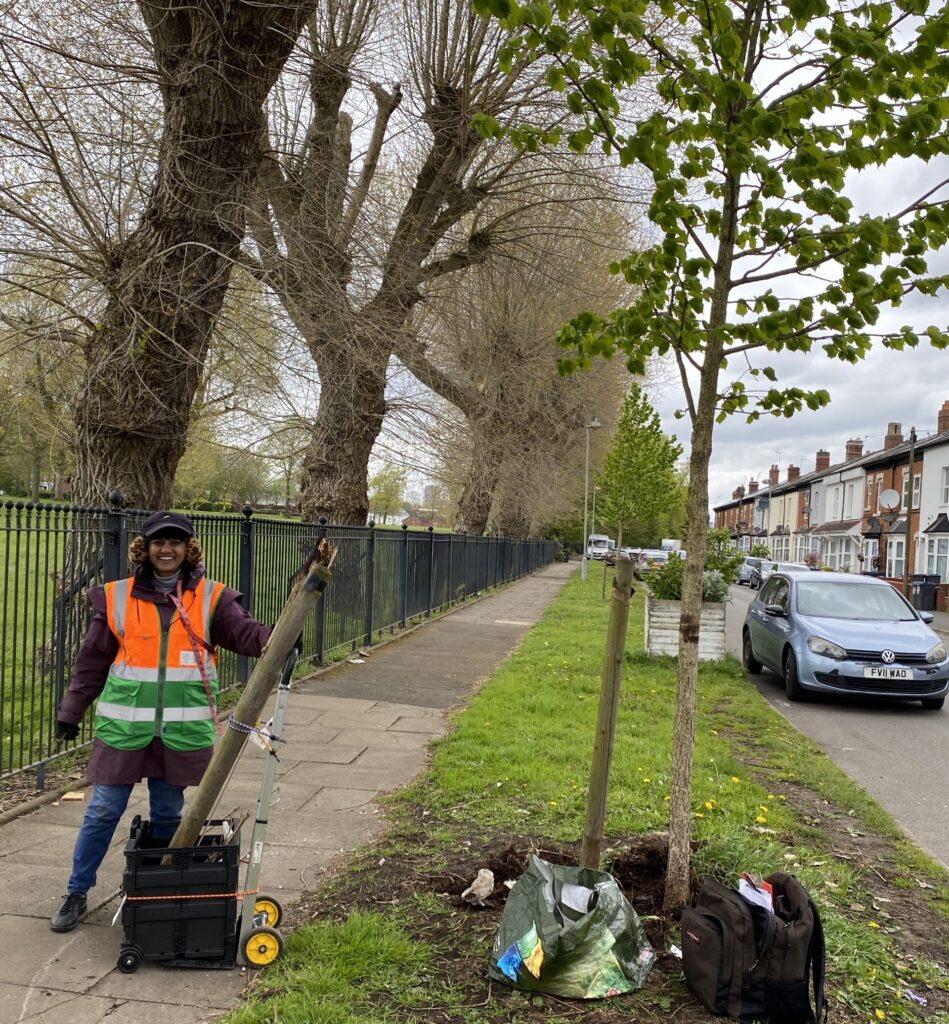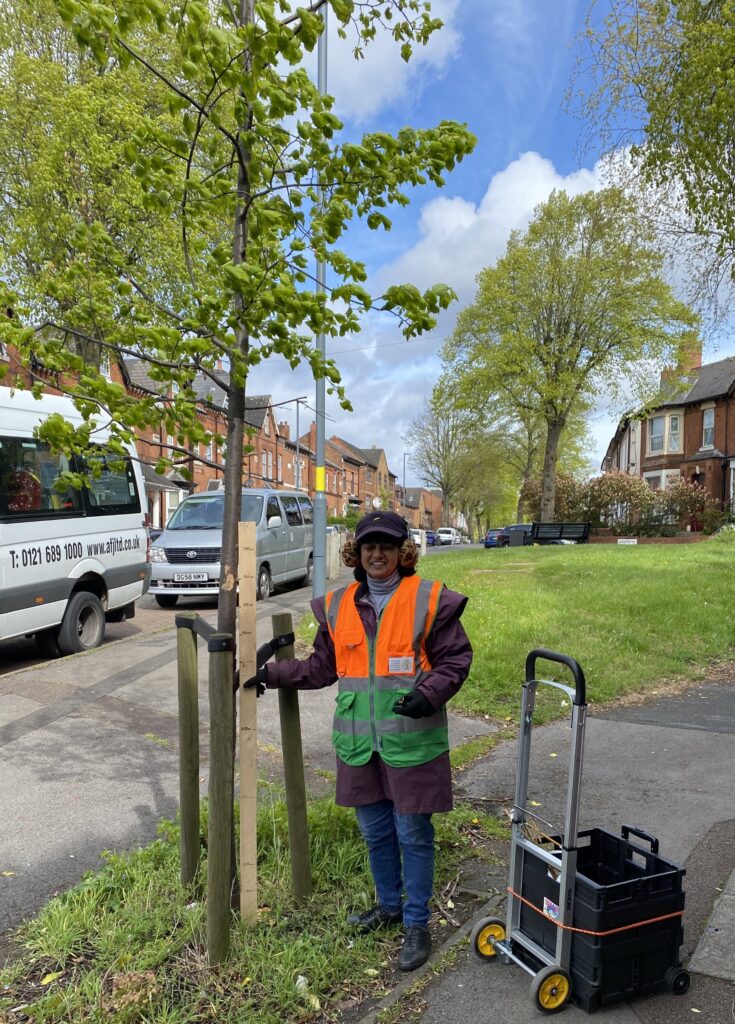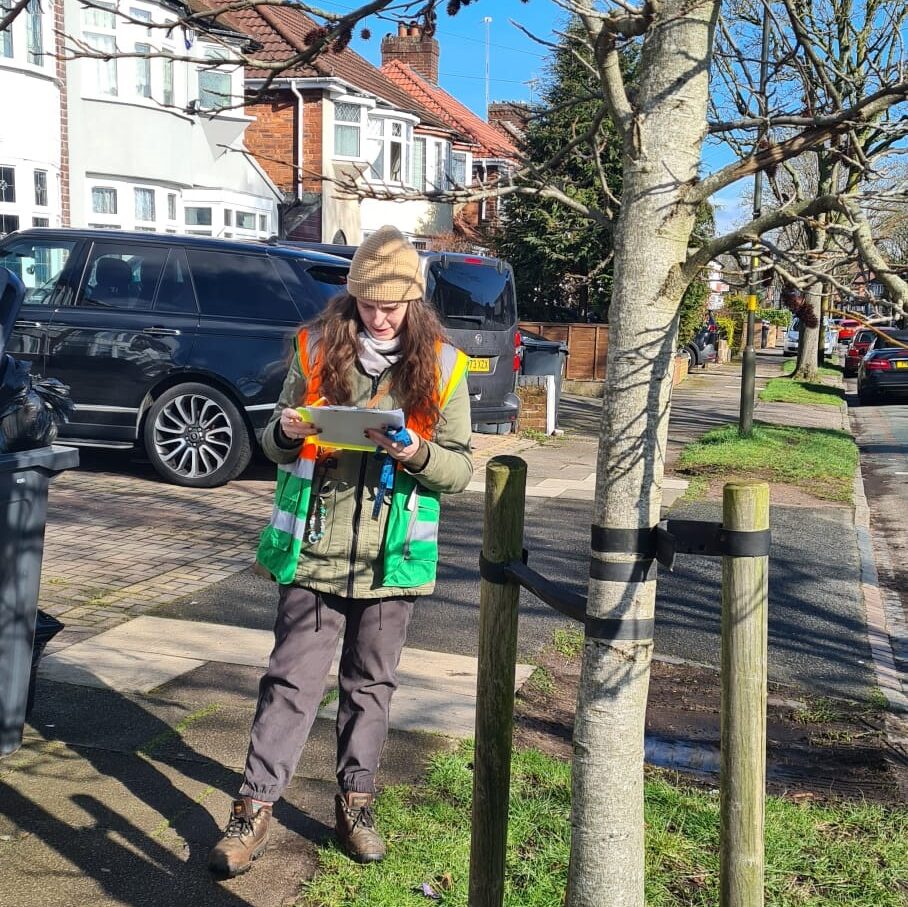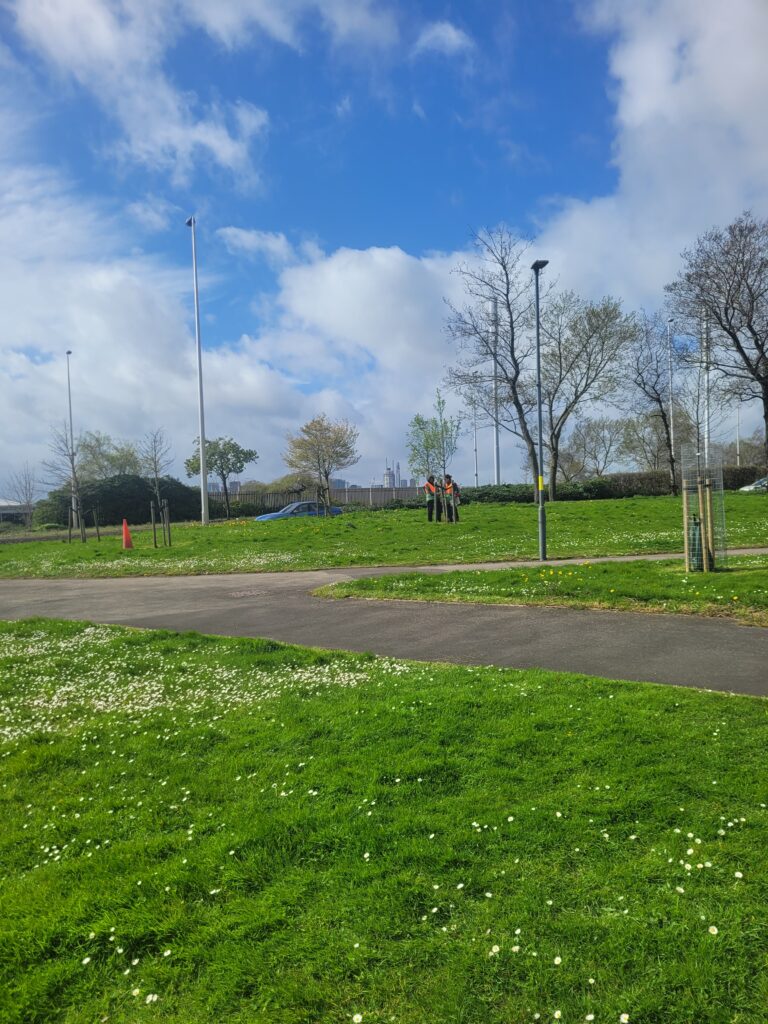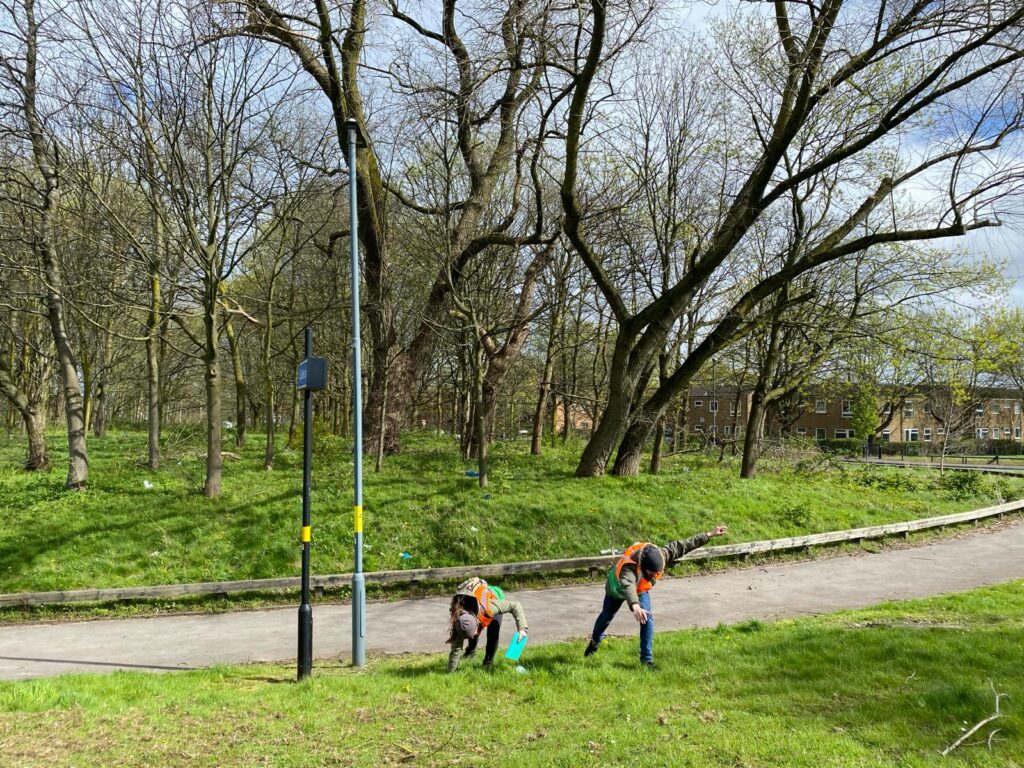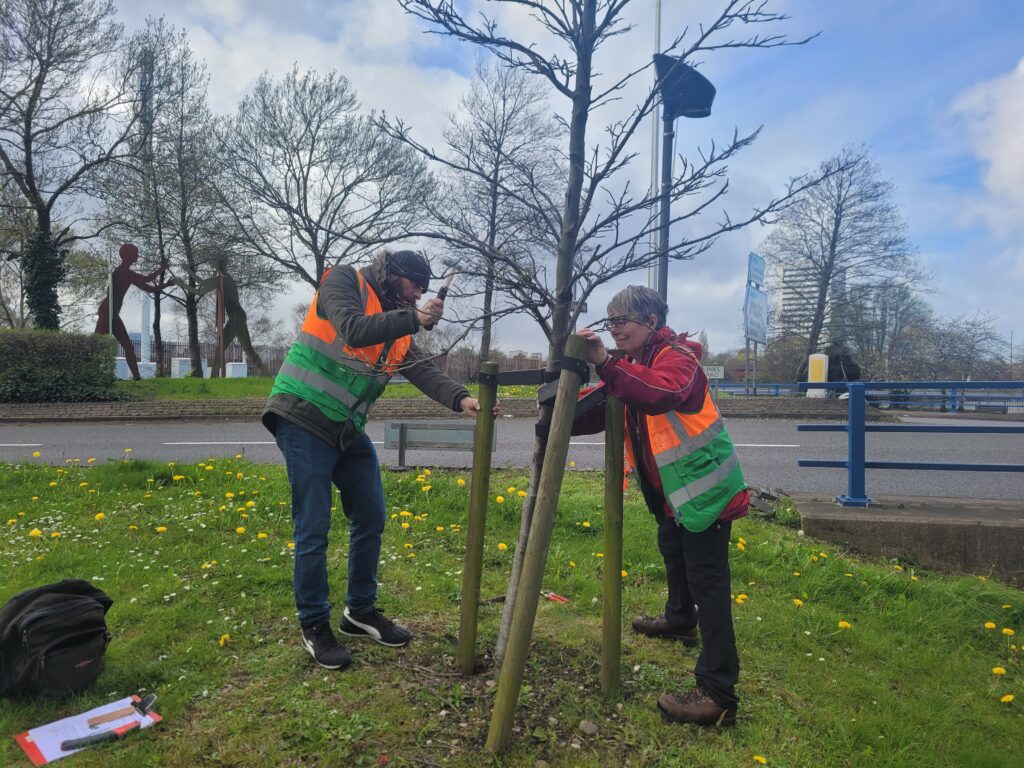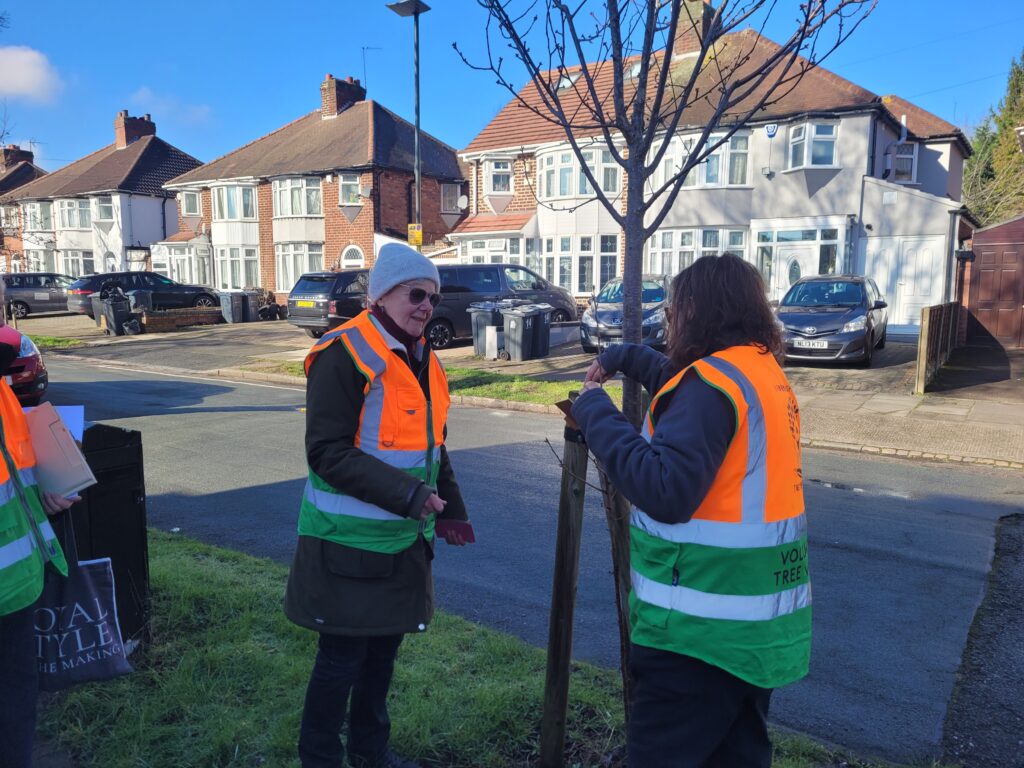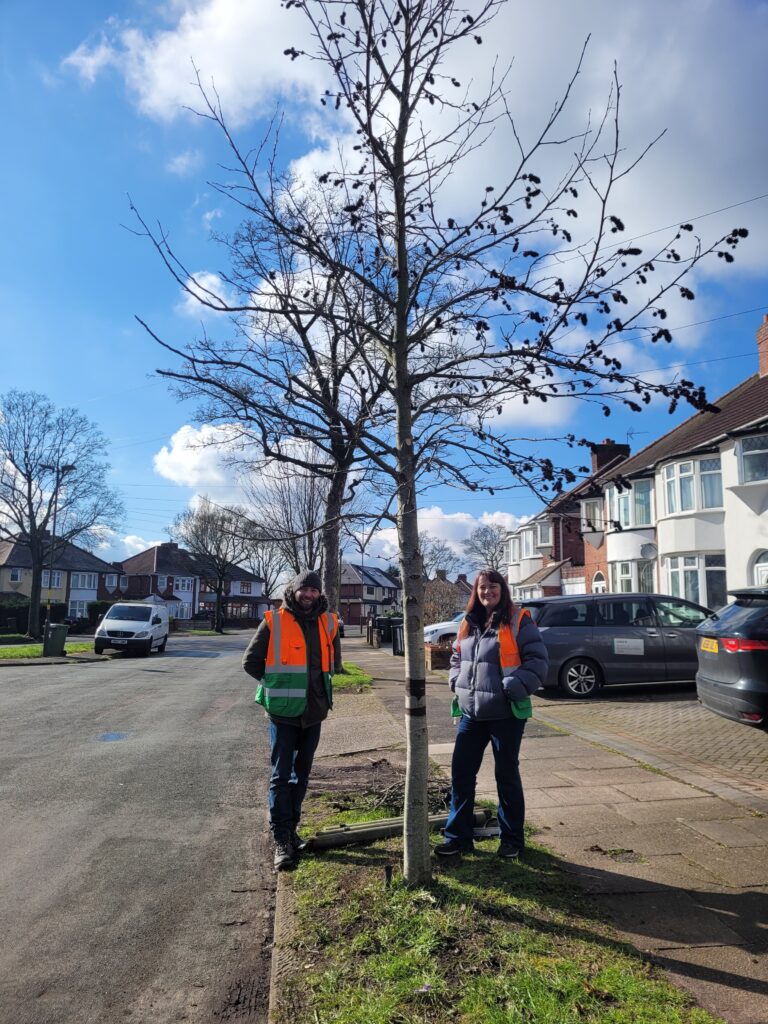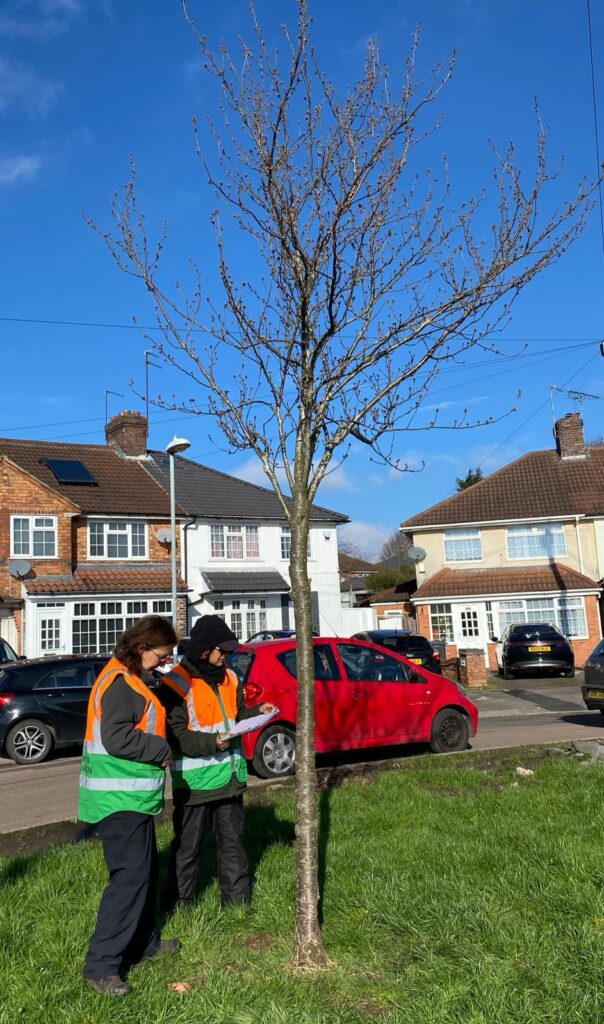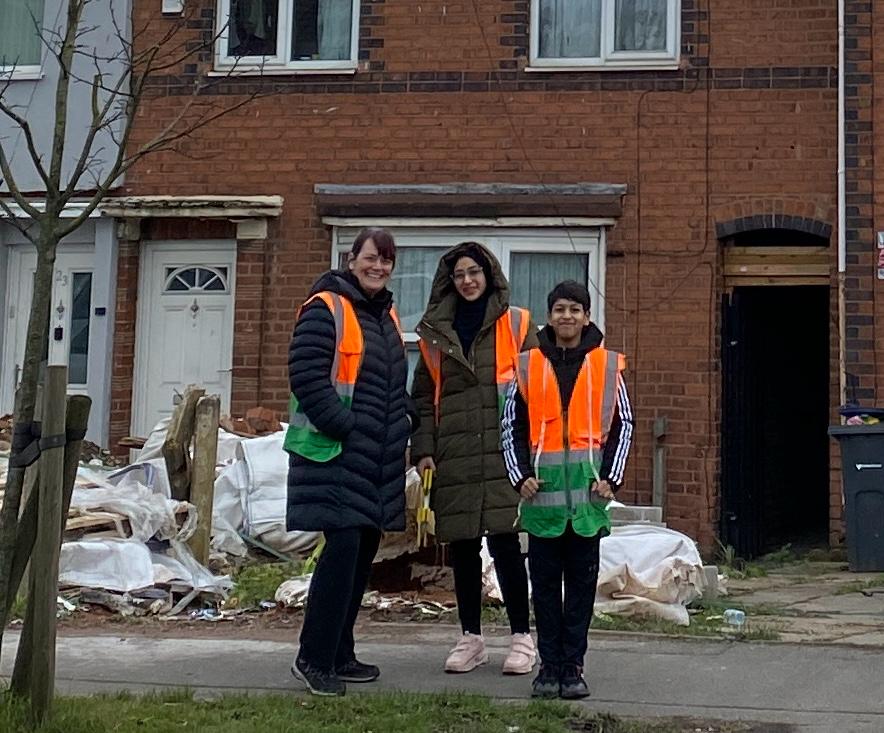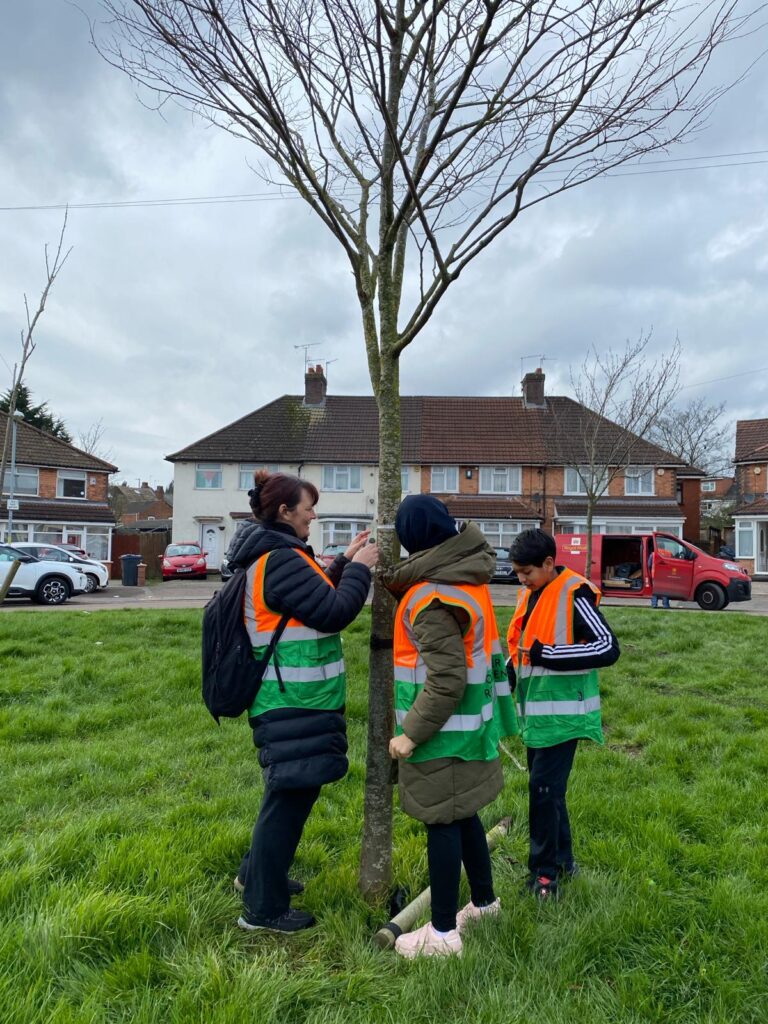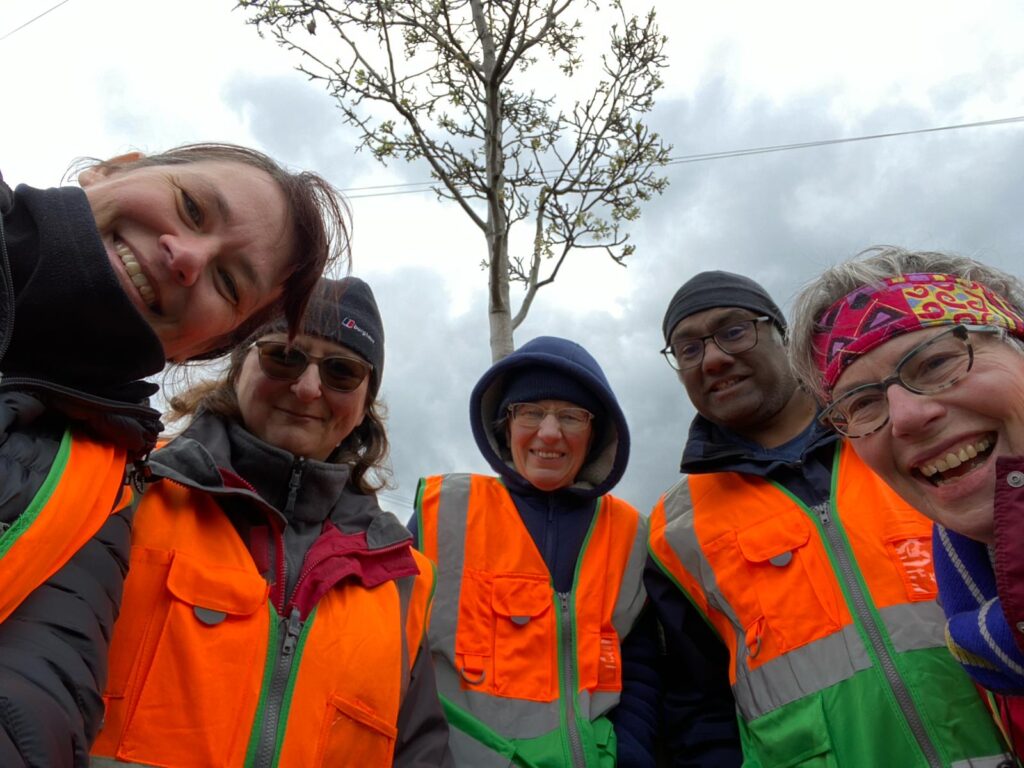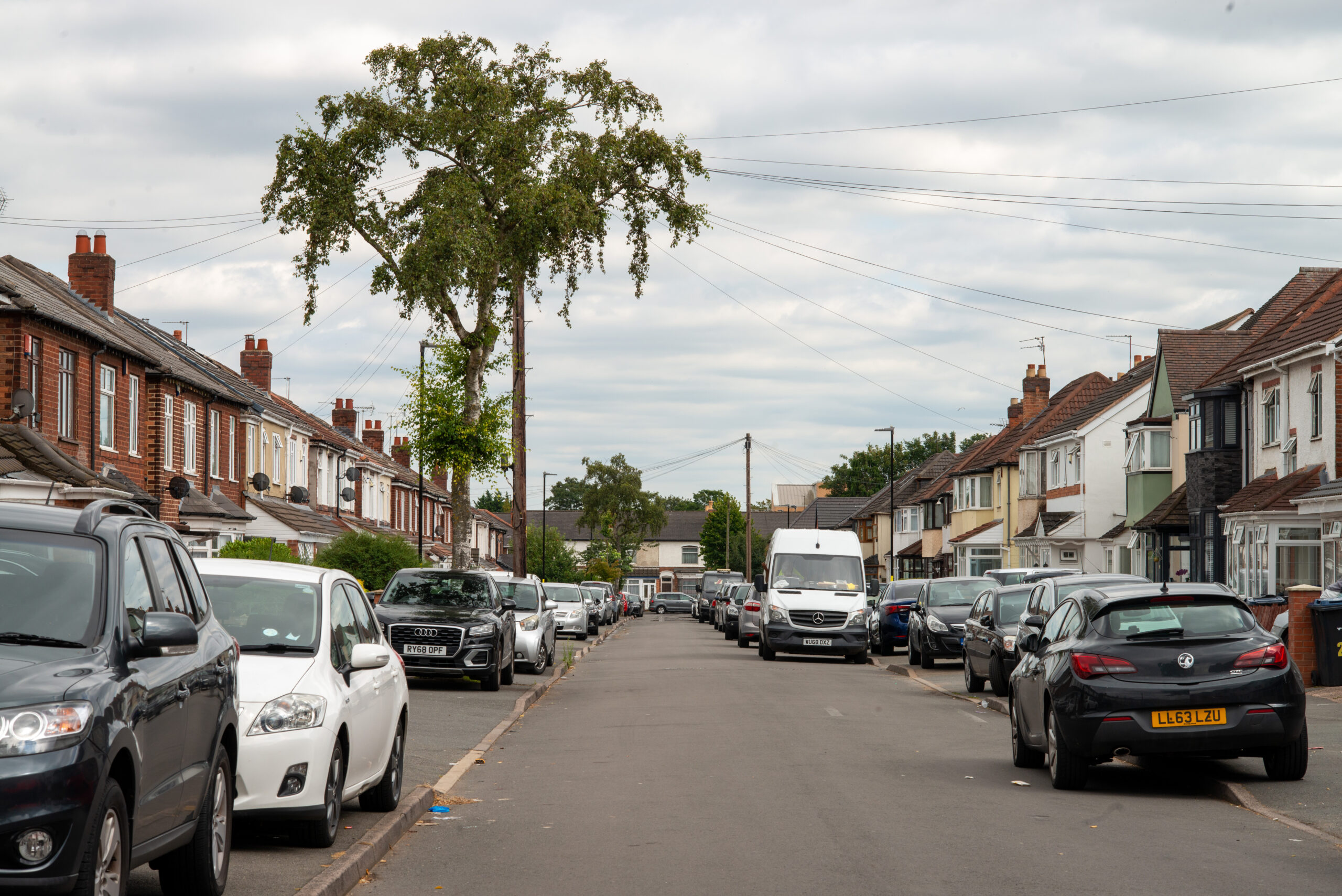
Introduction to Street Trees
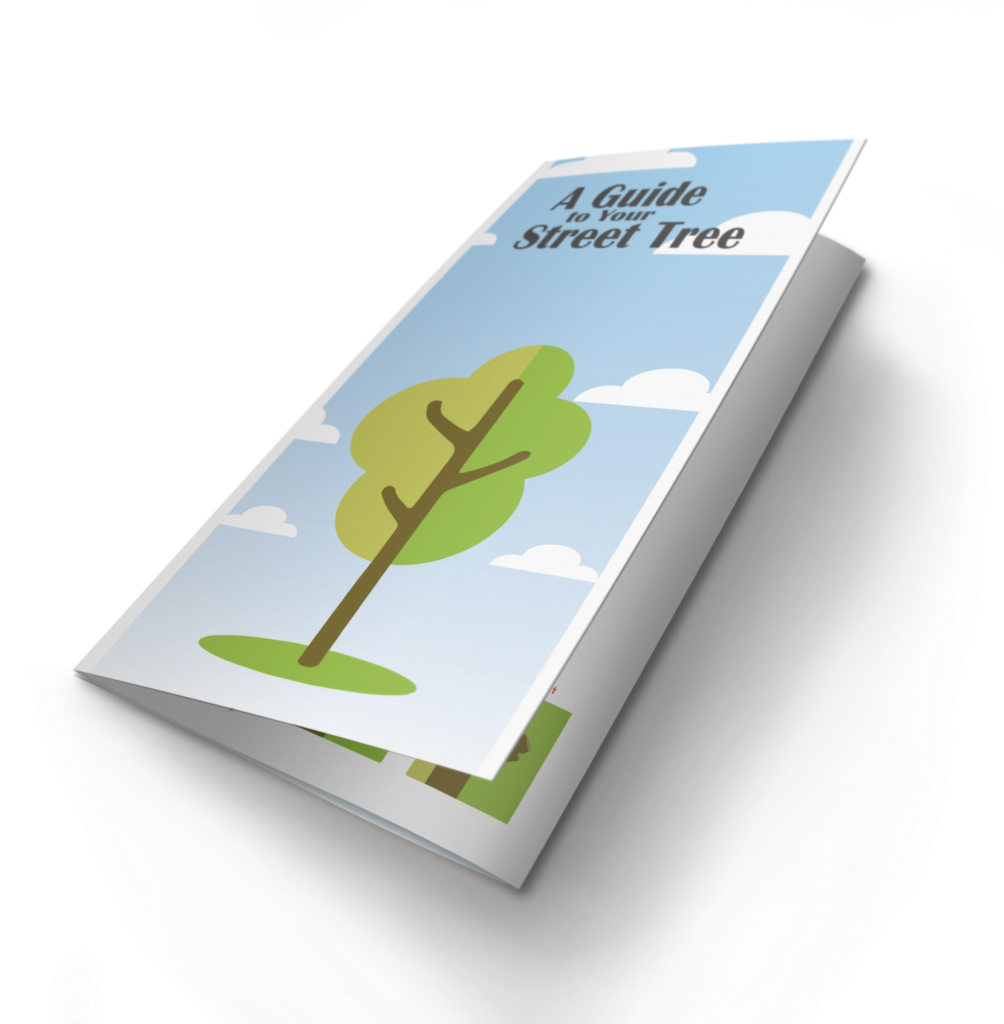
We are surveying all the newly planted street trees in Birmingham to check that they are thriving and growing well. Nina Griffiths, one of the BTP trustees, is making sure our young trees are being looked after properly, in order to help them grow into mature trees to increase Birmingham’s canopy cover, reduce air pollution and urban heating, amongst many other factors. Volunteer tree surveyors are being trained to undertake the survey work with our help.
Why survey the street trees?
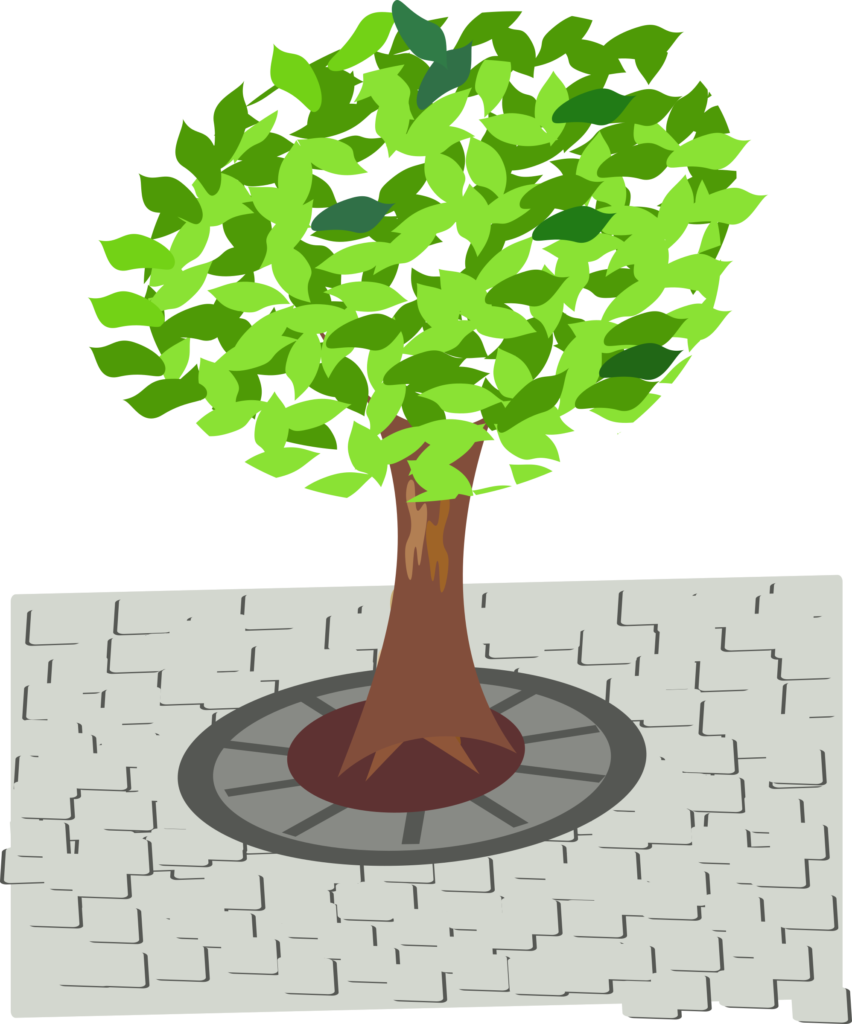
The general overview of this survey is to asses the crown dieback, overall condition, and potential damage of street trees, old and newly planted. This will determine we can proceed with planting new species suitable for the warming climate. We will do this by increasing canopy cover in priority wards around Birmingham, and improving the upkeep of our street trees. Based on an American model, TreePlotter analysis is used to record the findings.
How do you conduct a Survey of Street Trees?
This video gives you an idea:
Street Tree Survey Training
New potential surveyors must attend mandatory zoom introduction (1 hour), followed by field training (2-3 hours). Existing surveyors (pre-2024) who haven’t attended yet this year must attend refresher field training (2 hours) only.
Online and field training dates will be arranged as needed for new surveyors for the remainder of 2024, for those who show a later interest in the ongoing street tree survey project. Please scroll down to read about this year’s funded survey to get involved.
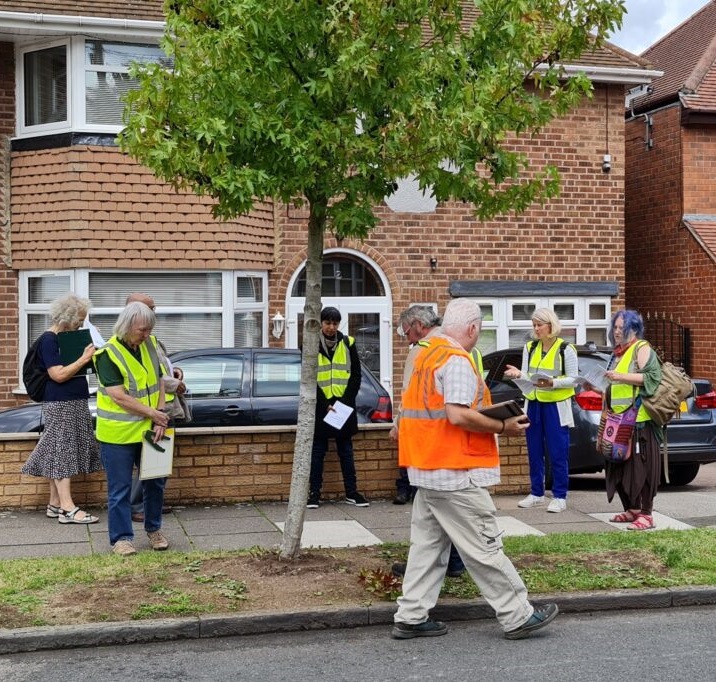
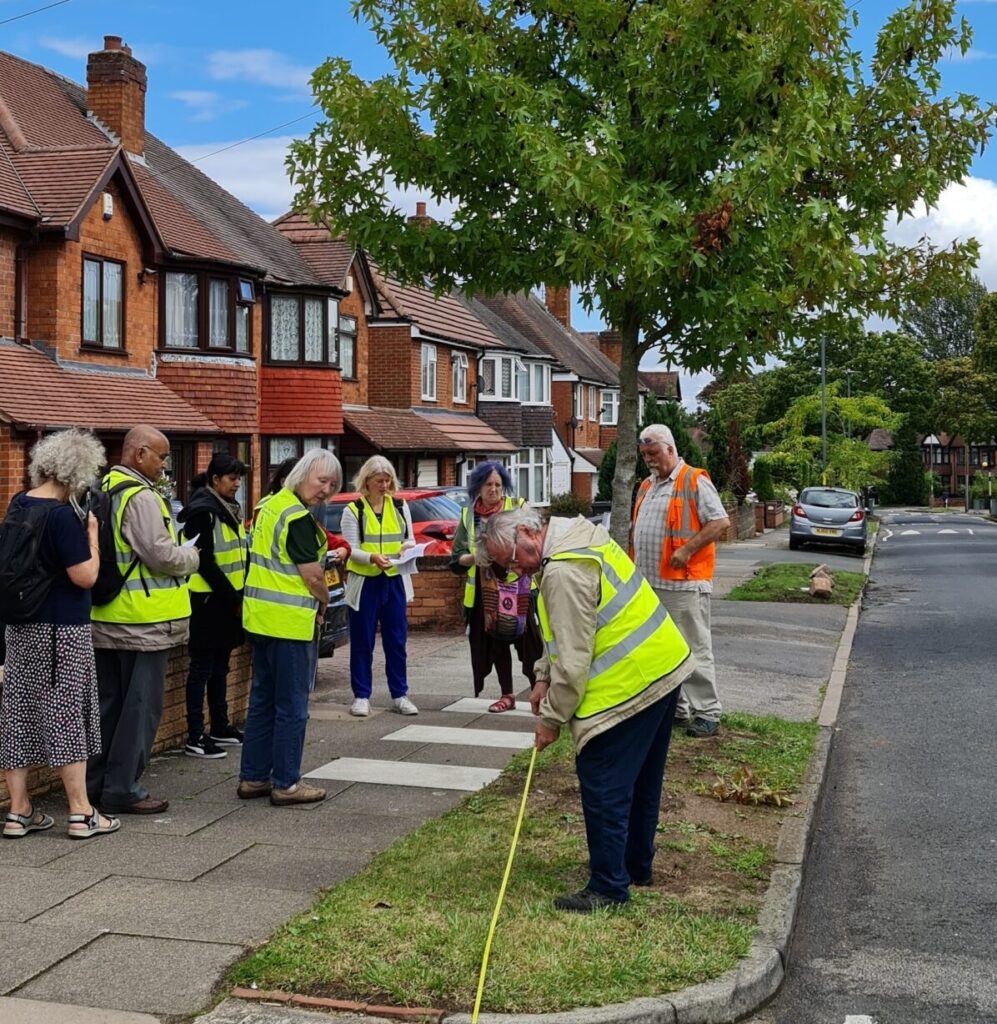
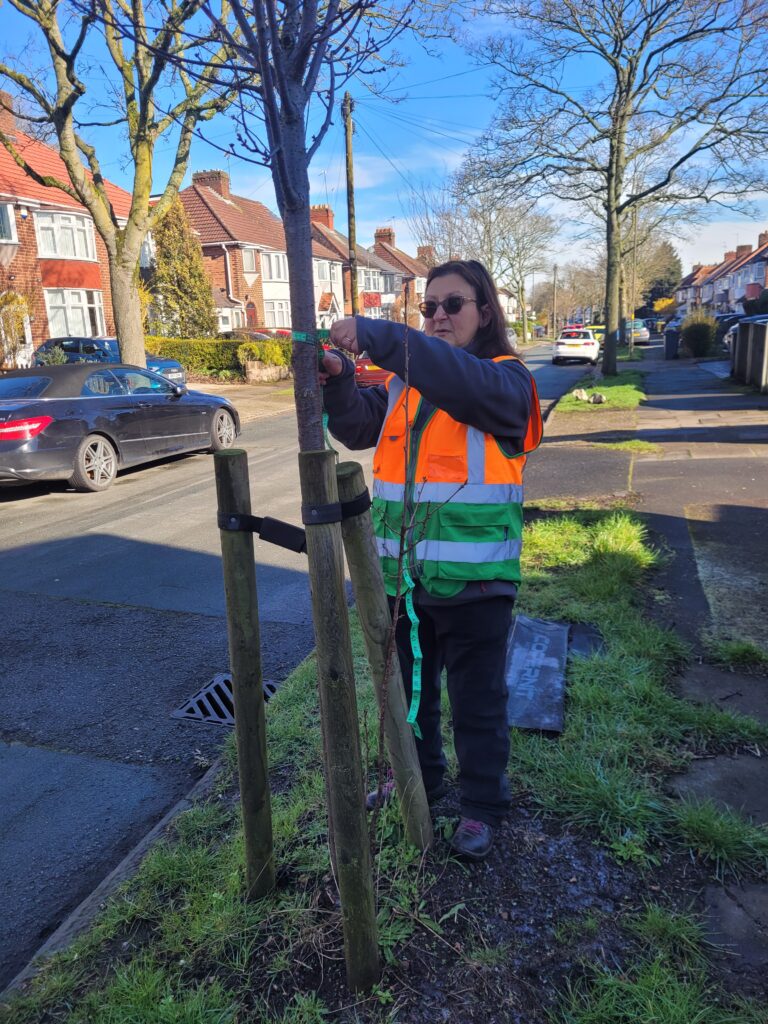
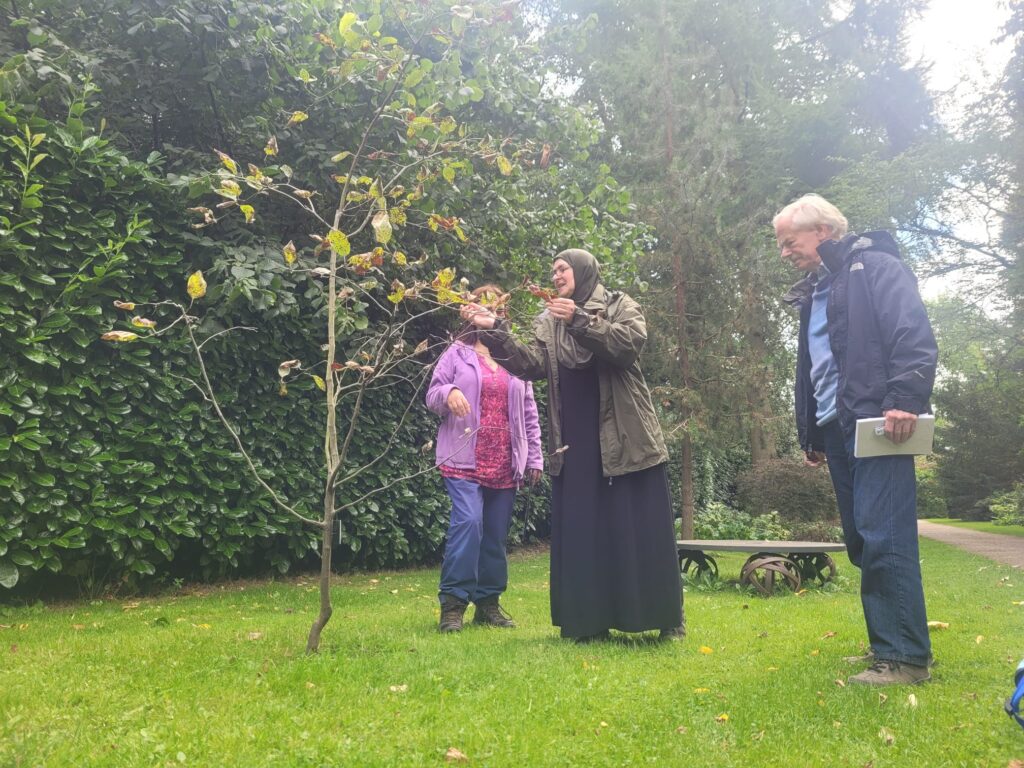
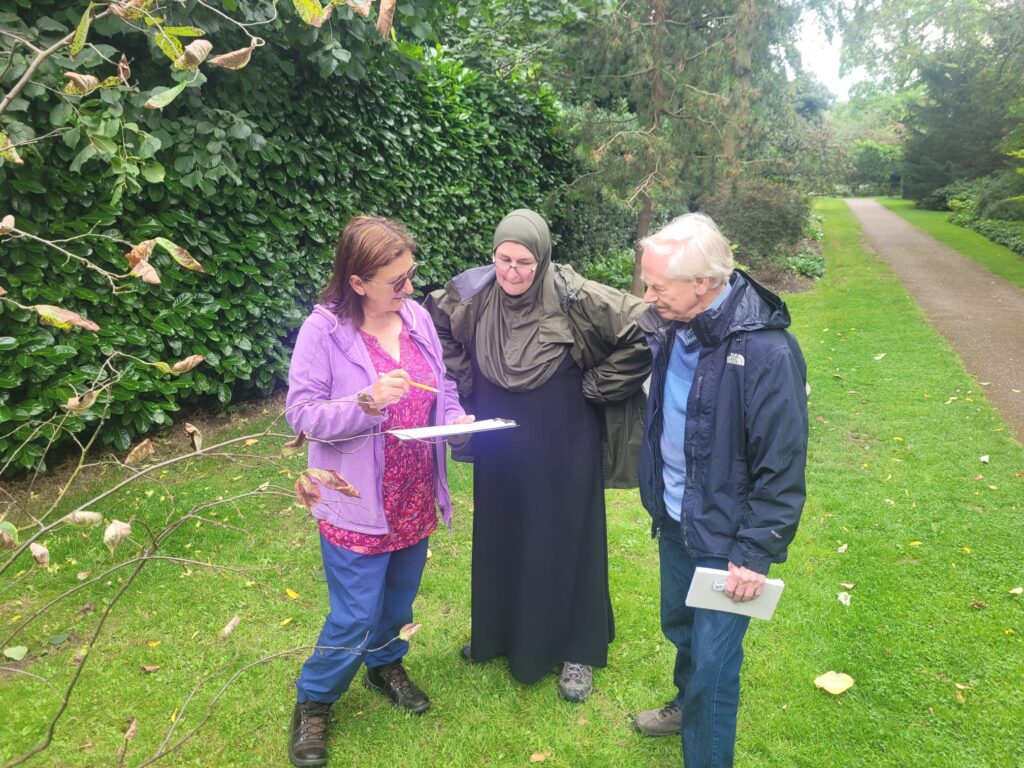
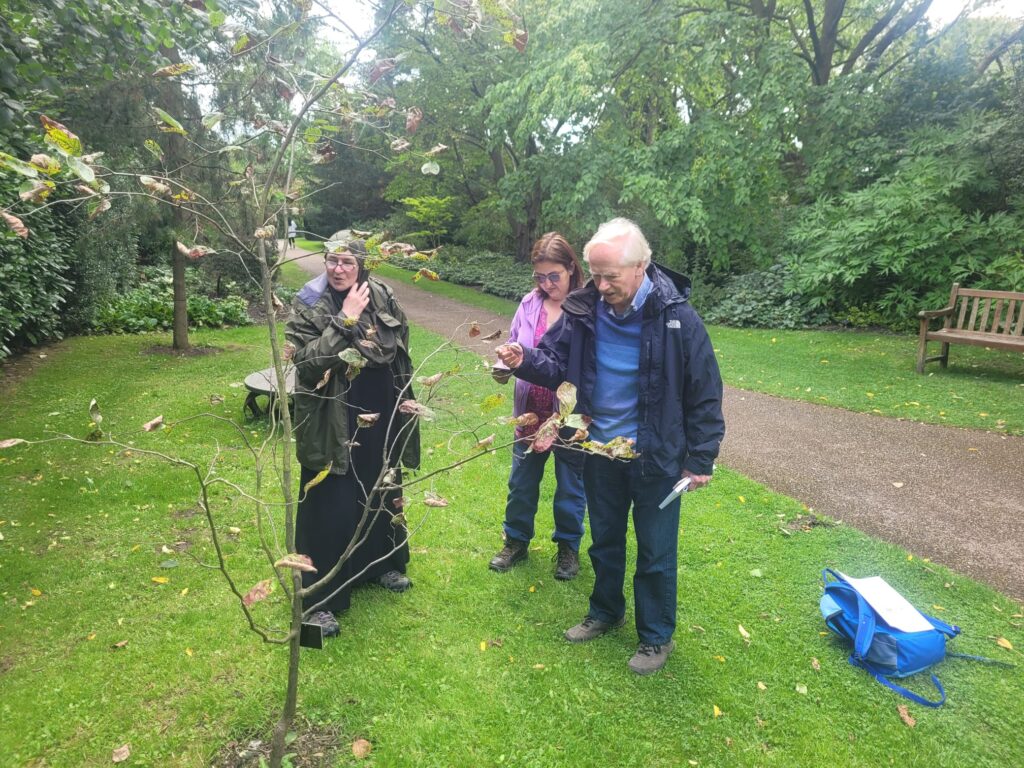
Where are the findings?
Street Trees: 2022
Here is the presentation with the interim findings of the Newly Planted Street Tree Survey, given to the Municipal Tree Officers Association on 7th Dec 2022:
Street Trees: 2023
Our findings, despite 69.5% of the surveyed trees being in good condition, were 7.4% poor and 2.5% dead. Additionally, only 18.2% were fair, meaning there will be many solutions to raise the percentage of good and fair condition trees. Most of the trees have date and time reference for planting; we can track the timing of the damage.
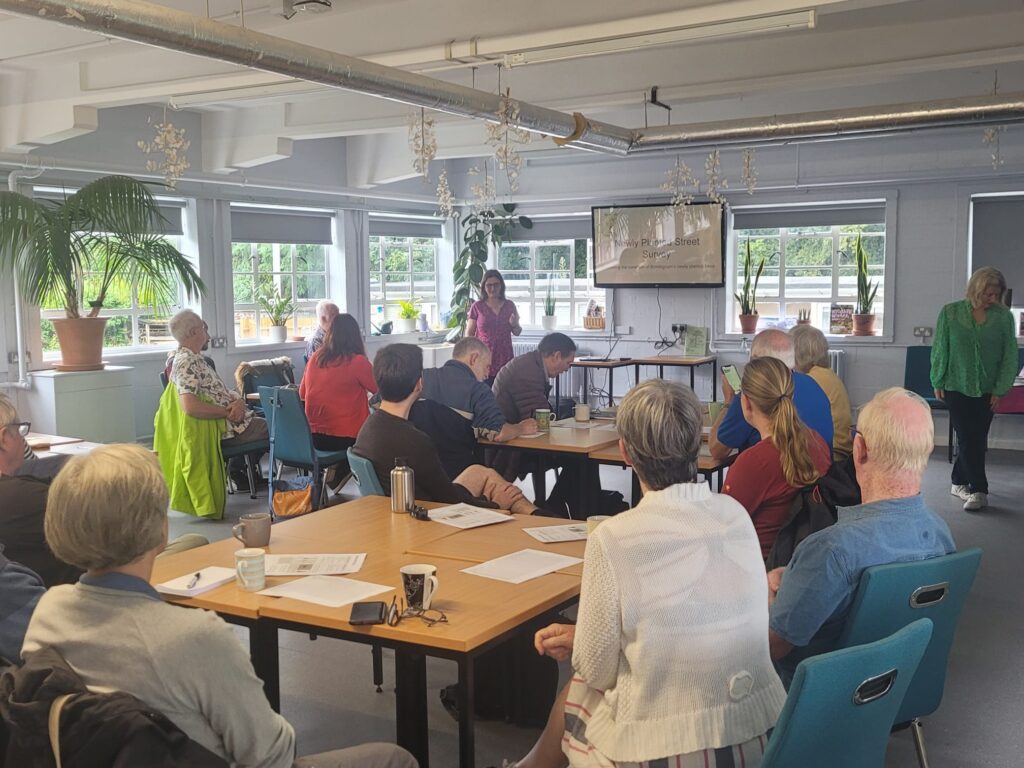
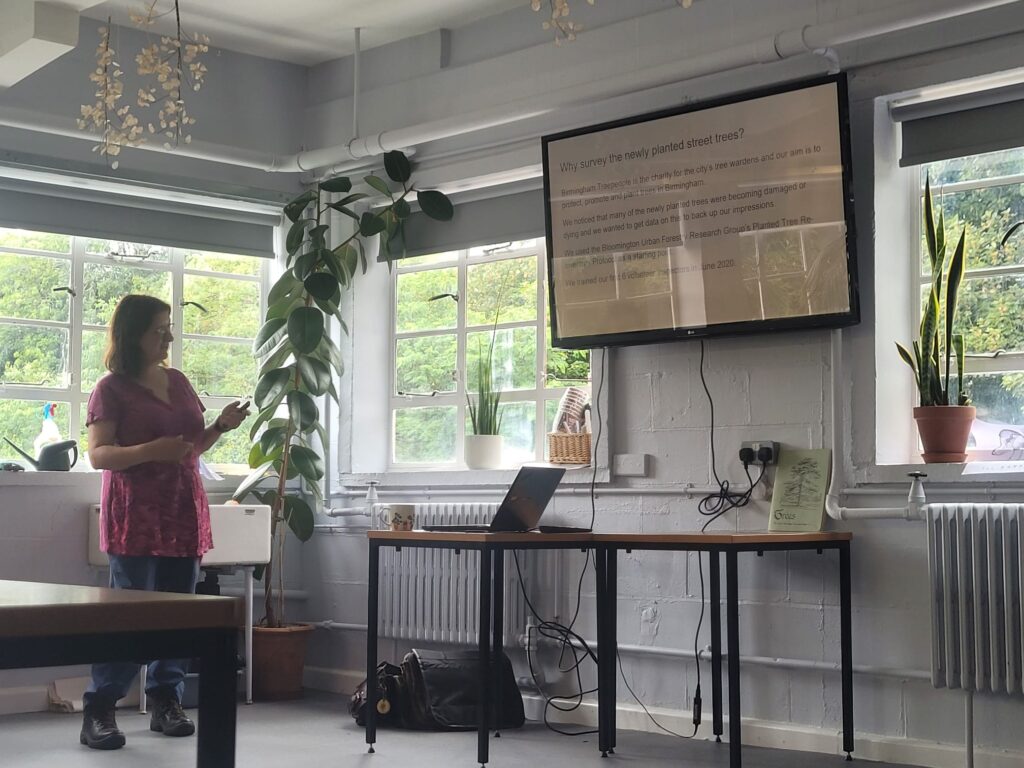
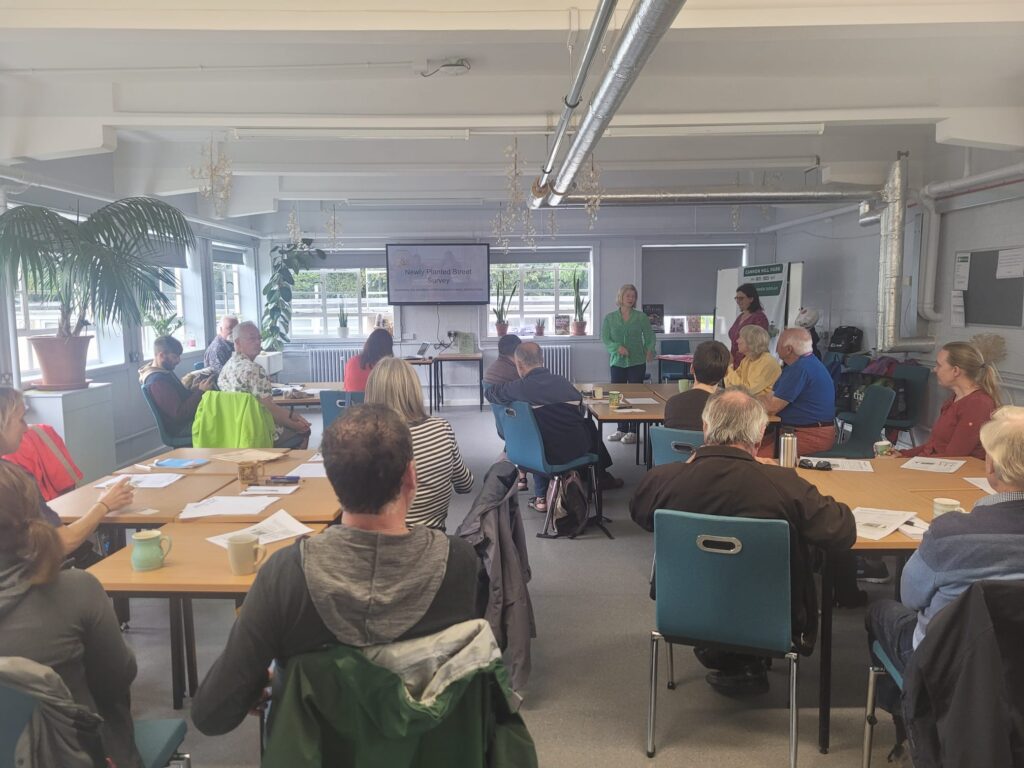
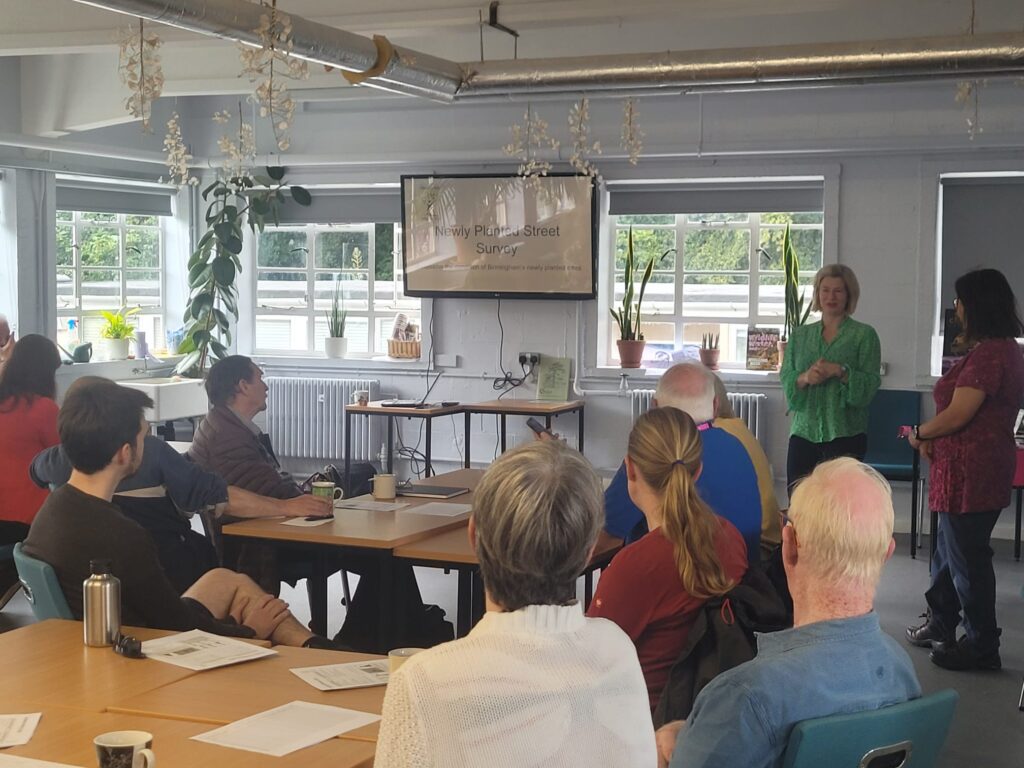
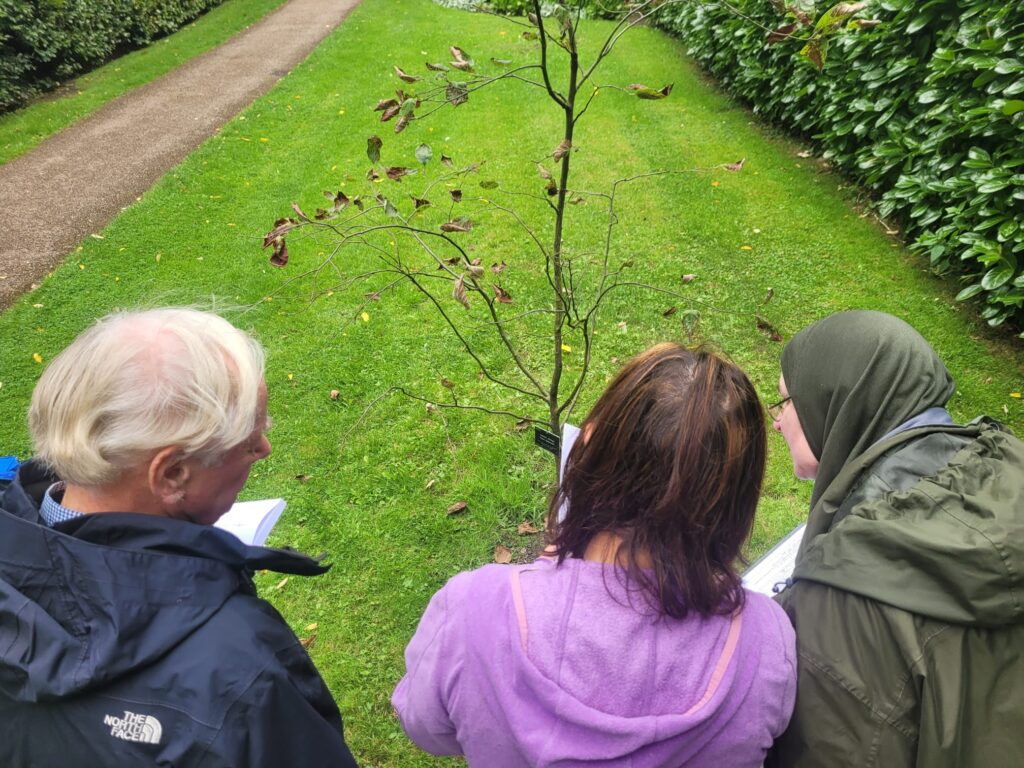
Problems
Root problems, loose trees, soil size, staking, vandalism, species selection, and low to no mulching (87.7%!) are all contributing factors to the failure of the trees in certain locations. It was found during a US study, that we have modeled ours on, that most of the trees died in poorer areas of the cities.
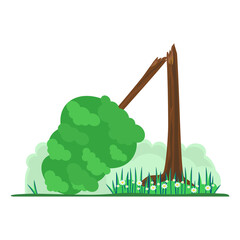
That’s why BTP are working on ‘red wards‘ or priority wards – areas that suffer from low income, and therefore low tree equity.
Species
We noticed from the data that forest trees like beeches are being planted, and trees from predominantly the rose family, like cherries. The problem is, these are susceptible to bacterial canker. Additionally, liquidambars appear frequently, although not native, and are thriving on our roads due to heat islands.
Outcome
The citizen science involved in this survey is ideal for informing the city council, highways and planting agencies. They have been mistakenly planting the wrong kinds of trees, due to nursery demands being five years in advance. We can inform them of the appropriate trees for the location. Science-driven planting is what we strive for. Informative, constructive, and science-based evidence for planting trees in certain street locations will improve the quality of those areas exponentially.
Street Trees: 2024
Thank you for showing an interest in the Citizen Science project in Street Tree Surveying. Thanks to everyone for your hard work, we have made a big dent in the number of trees surveyed so far in 2024: 1,885 trees. In contrast, from 2020 to 2023, we surveyed 1,427 trees. Only 1,115 trees remaining for the funded project, which is due to finish at the end of March 2025.
If you wish to continue surveying during December and January by yourself or with another surveyor, I can provide a list of trees in your chosen area. Let me know if this is something you would like to do. I have been checking the data collected so far. During December and January, I will be sending emails requesting some trees to be surveyed again due to missed variables/errors etc. If you are willing to help with this, it would be appreciated.
The next introduction sessions via zoom (about 1 hour) will be on:
Monday 13th January at 7pm
Tuesday 21st January at 7pm
Wednesday 29th January at 7pm
Thursday 6th February at 7pm
Let me know if you wish to attend and I can send you the zoom link.
Application Form: https://forms.gle/YRUqXG51PF55udbs6
Surveying will restart in February, dates and locations will be sent out after the introduction sessions. Thank you for your ongoing support! – Nina Griffiths, Trustee Coodinator for the Street Tree Survey Project
In 2024, we received a generous grant, which will advance the citizen science street tree survey massively. This project has been funded by Heart of England Community Foundation, through West Midlands Combined Authority’s Community Environment Fund. This project runs from April 2024 to March 2025, with a total of 3,000 street trees to survey.


The project will pay £2.00 per surveyed tree to a maximum of 100 trees per surveyor. You will be paid after every 25 trees you survey, and after the data has been validated.
Bank details will be requested via an application form, if you decide to participate in this project after the initial field training session. On completion of the project, all banking details will be deleted under our guidelines: BTP Privacy Policy.
The following priority wards (as dictated by the UFMP) will be completed first: Bordesley Green, Hodge Hill, Nechells, Tyburn, Washwood Heath. Once all the trees are surveyed in these priority wards, we will be surveying in other wards in the city. Please be aware that the trees for surveying are scattered around the city, so it involves traveling and walking between tree locations.
Existing surveyors (pre-2024) must attend refresher field training (2 hours). New potential surveyors must attend mandatory zoom introduction. It’s approximately 1 hour long and it will explain the citizen science project, followed by field training (2-3 hours).

Any surveying equipment issued must be returned after your participation in the project, and a tick-box form will be issued after the initial induction, so we can keep track of the equipment and ensure it is returned. If you wish to continue as a volunteer with the project, you may keep the equipment for future surveying.
Surveying locations will be emailed with addresses of the meeting points and also using the What3words app.
Thank you for showing an interest in this citizen science project to help look after our street trees and our environment.
If you’re an urban forest volunteer, you can download the variables handout below for the ongoing survey.
Survey Gallery 2024
